
From David Black
Navahrudak Eli Mitre Family

Navarudak KehilaLink
JewishGen – The Home of Jewish Genealogy
JewishGen – The Home of Jewish Genealogy



and Jewish Life

From David Black
Navahrudak Eli Mitre Family

Navarudak KehilaLink

Wellington, New Zealand


Kaua rawa e mea ko te mate anahe tō huarahi,
Ahakoa āraia ana te kiko o te rangi e te pōuriuri,
Kei te tata mai te wā kua roa e tāria ana;
Ka rū te whenua i te takahi a ngā wae – ki te haka!
Mai i te whenua o te nīkau, ki te whenua kōkēi o te huka,
E haere nei mātou i runga i te kōharihari me te tiwhatiwha;
Katoa ngā wāhi i pipī ai ō mātou toto ki te papa,
Ka puāwai mai i reira tō mātou māia me tō mātou kaha.
Ka whiti tonu te rā i te ata, ka ao te rangi,
Katoa ngā raru o nanahi ka ngaro me te hoa kakari;
Ā, ki te roa te wā i mua i te aranga mai anō o te rā,
Tukua mā tēnei wai ngā tau e whakaaomārama.
I titongia ai tēnei waiata ki te toto, kaua ki te matā;
Ehara i te waiata e haria ai e ngā manu o ō te raumati rā
Engari nā te iwi i te kauhanga riri a Tū,
Tēnei waiata a mātou i hari ki te pū me te pohū.
Kaua rawa e mea ko te mate anahe tō huarahi,
Ahakoa āraia ana te kiko o te rangi e te pōuriuri,
Kei te tata mai te wā kua roa e tāria ana;
Ka rū te whenua i te takahi a ngā wae – ki te haka!
Source: elirab.me/znk
Eli Rabinowitz CEO
WE ARE HERE! Foundation
Perth Australia


Earlier blogs:

9 December 2021
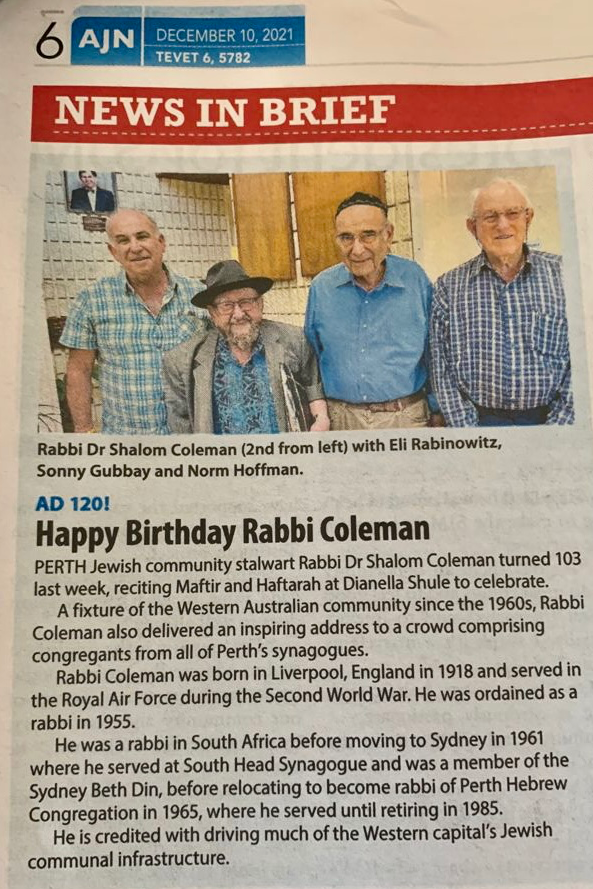

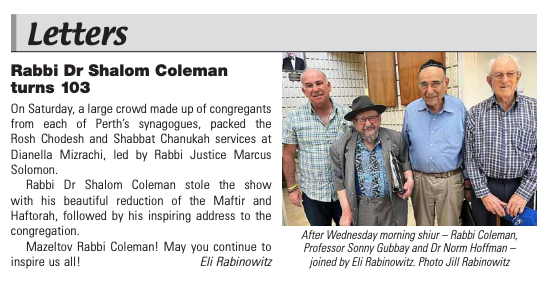
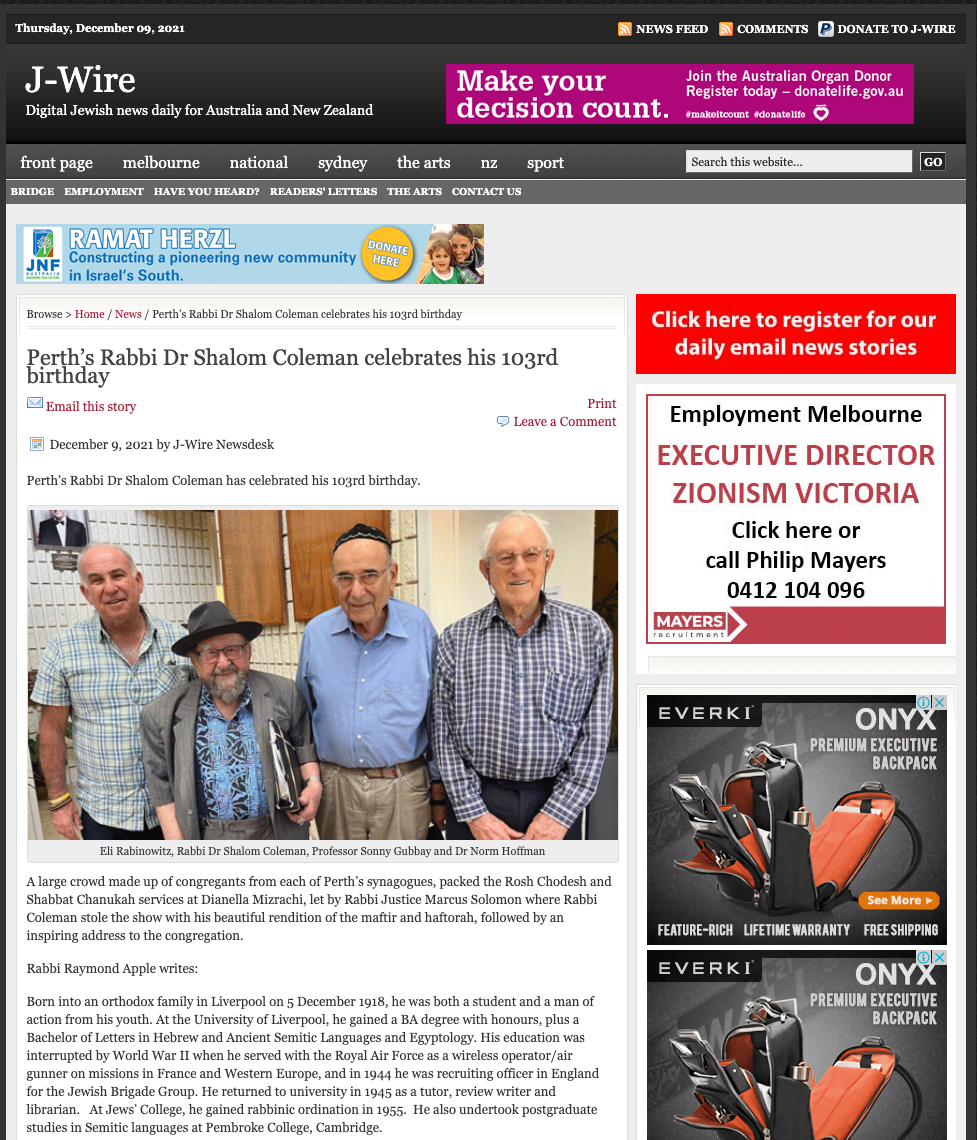
Perth’s Rabbi Dr Shalom Coleman celebrates his 103rd birthday
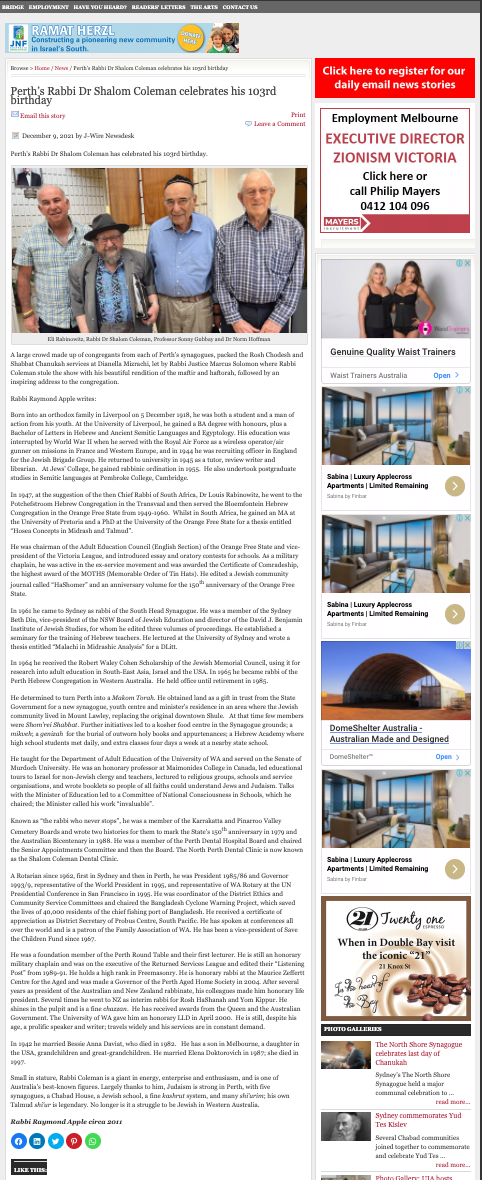
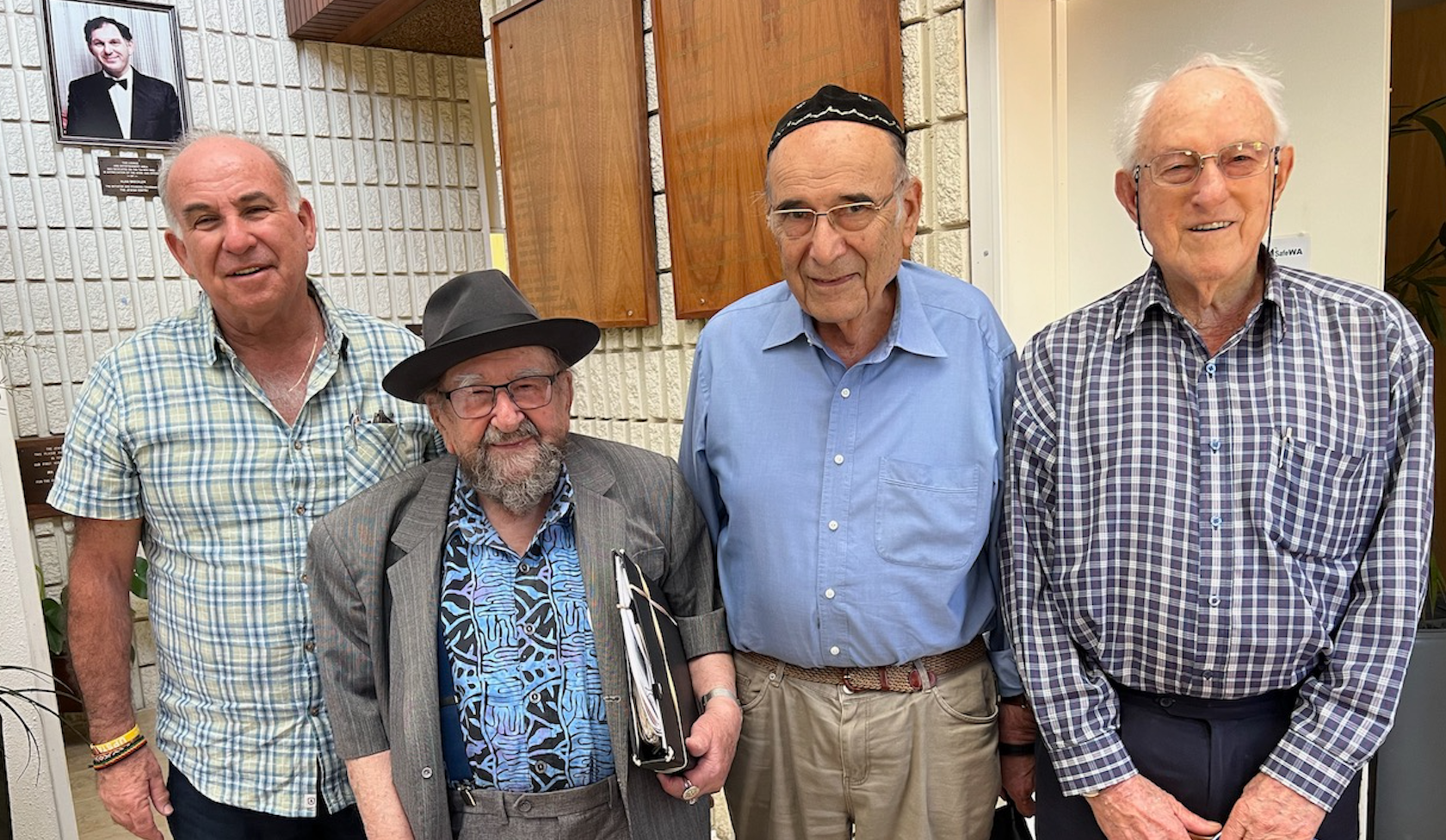
Rabbi Shalom Coleman – 103! – Mazeltov!
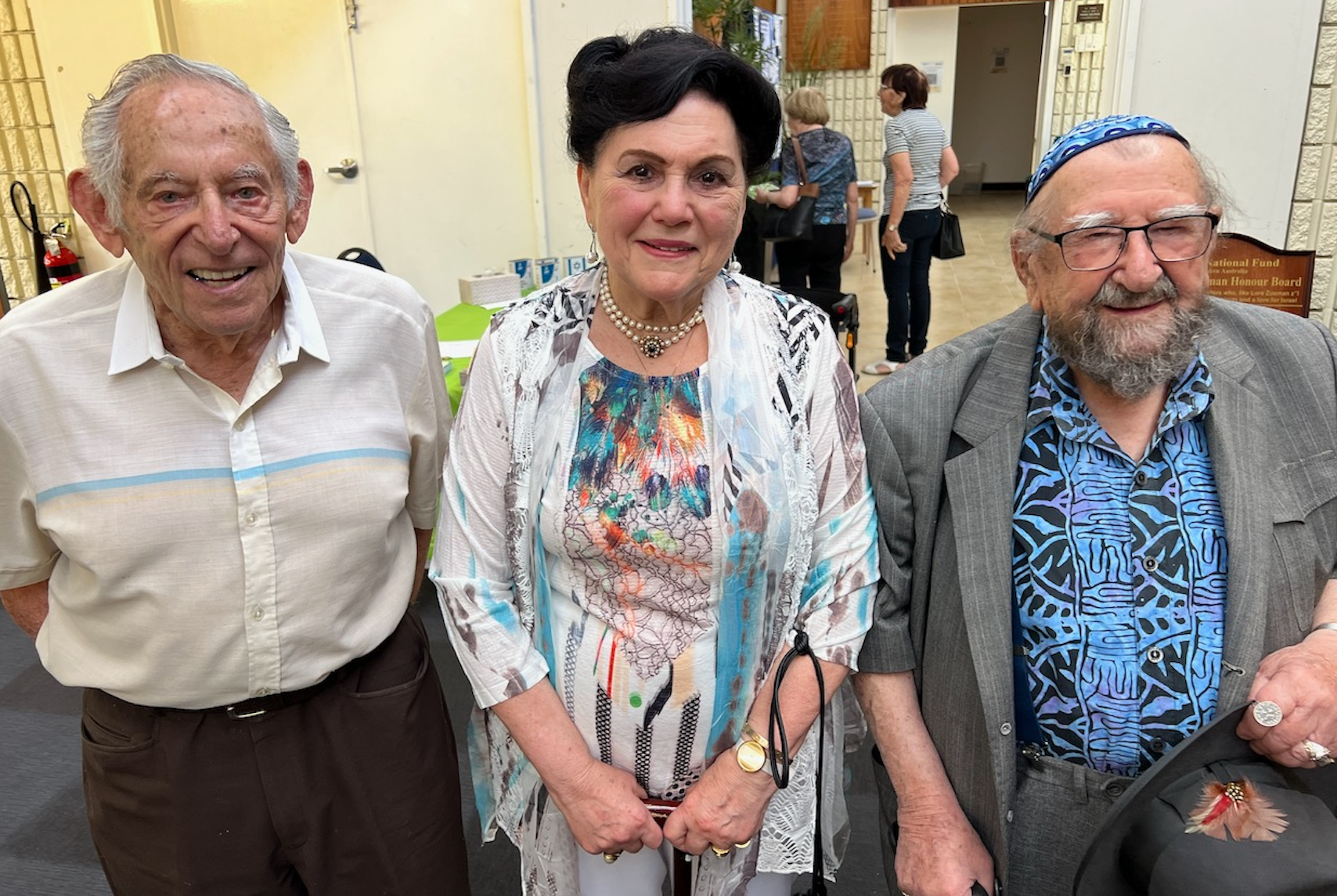
With long standing friends from the Bloemfontein days, Barney and Myra Wasserman, taken last week at the Perth Jewish Centre.
Here are photos and items reposted from my previous posts
The People’s Rabbi
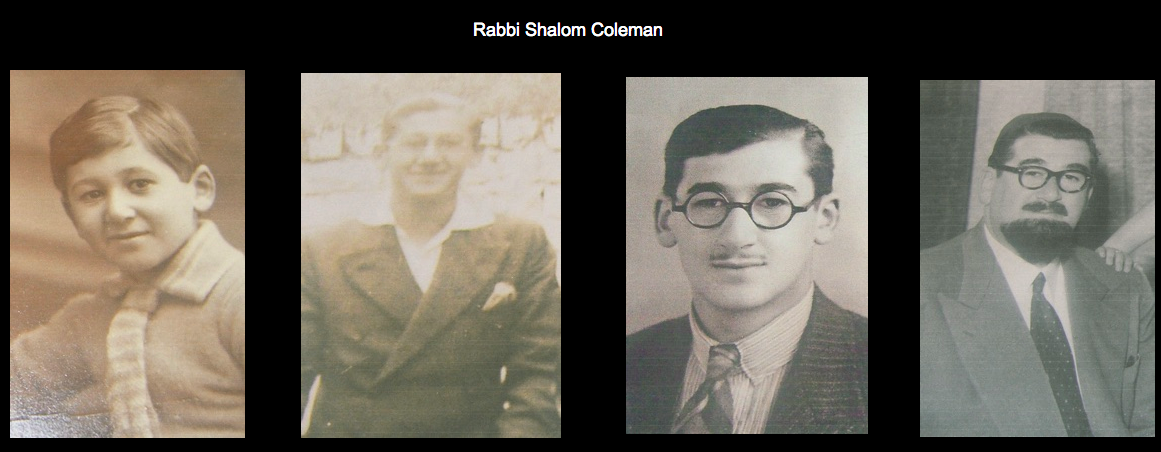
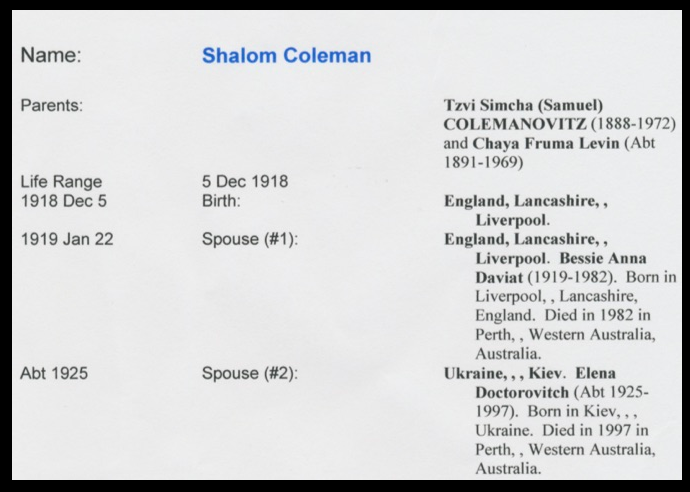
Source: elirab.com/Coleman.html
SHALOM COLEMAN – RABBINIC DYNAMO
by Raymond Apple, emeritus rabbi of the Great Synagogue, Sydney
Bio about 10 years ago
Small in size but a giant in stature – that describes Rabbi Shalom Coleman, who changed the face of Judaism in Western Australia. Thanks to his refusal to give up or give in, a sleepy, distant community was set on the path to becoming a lively centre of orthodoxy. Rabbi Coleman is now over 90, hopefully with three more decades of work ahead until the proverbial 120.
Born into an orthodox family in Liverpool on 5 December, 1918, he was both a student and a man of action from his youth. At the University of Liverpool he gained a BA degree with honours, plus a Bachelor of Letters in Hebrew and Ancient Semitic Languages and Egyptology. His education was interrupted by World War II when he served with the Royal Air Force as a wireless operator/air gunner on missions in France and Western Europe, and in 1944 he was recruiting officer in England for the Jewish Brigade Group. He returned to university in 1945 as tutor, review writer and librarian. At Jews’ College, he gained rabbinic ordination in 1955. He also undertook postgraduate studies in Semitic languages at Pembroke College, Cambridge.
In 1947, at the suggestion of the then Chief Rabbi of South Africa, Dr Louis Rabinowitz, he went to the Potchefstroom Hebrew Congregation in the Transvaal and then served the Bloemfontein Hebrew Congregation in the Orange Free State from 1949-1960. Whilst in South Africa, he gained an MA at the University of Pretoria and a PhD at the University of the Orange Free State for a thesis entitled “Hosea Concepts in Midrash and Talmud”.
He was chairman of the Adult Education Council (English Section) of the Orange Free State and vice-president of the Victoria League, and introduced essay and oratory contests for schools. As a military chaplain he was active in the ex-service movement and was awarded the Certificate of Comradeship, the highest award of the MOTHS (Memorable Order of Tin Hats). He edited a Jewish community journal called “HaShomer” and an anniversary volume for the 150th anniversary of the Orange Free State.
In 1961 he came to Sydney as rabbi of the South Head Synagogue. He was a member of the Sydney Beth Din, vice-president of the NSW Board of Jewish Education and director of the David J. Benjamin Institute of Jewish Studies, for whom he edited three volumes of proceedings. He established a seminary for the training of Hebrew teachers. He lectured at the University of Sydney and wrote a thesis entitled “Malachi in Midrashic Analysis” for a DLitt.
In 1964 he received the Robert Waley Cohen Scholarship of the Jewish Memorial Council, using it for research into adult education in South-East Asia, Israel and the USA. In 1965 he became rabbi of the Perth Hebrew Congregation in Western Australia. He held office until retirement in 1985.
He determined to turn Perth into a Makom Torah. He obtained land as a gift in trust from the State Government for a new synagogue, youth centre and minister’s residence in an area where the Jewish community lived in Mount Lawley, replacing the original downtown Shule. At that time few members were Shom’rei Shabbat. Further initiatives led to a kosher food centre in the Synagogue grounds; a mikveh; a genizah for the burial of outworn holy books and appurtenances; a Hebrew Academy where high school students met daily, and extra classes four days a week at a nearby state school.
He taught for the Department of Adult Education of the University of WA and served on the Senate of Murdoch University. He was an honorary professor at Maimonides College in Canada, led educational tours to Israel for non-Jewish clergy and teachers, lectured to religious groups, schools and service organisations, and wrote booklets so people of all faiths could understand Jews and Judaism. Talks with the Minister of Education led to a Committee of National Consciousness in Schools, which he chaired; the Minister called his work “invaluable”.
Known as “the rabbi who never stops”, he was a member of the Karrakatta and Pinarroo Valley Cemetery Boards and wrote two histories for them to mark the State’s 150th anniversary in 1979 and the Australian Bicentenary in 1988. He was a member of the Perth Dental Hospital Board and chaired the Senior Appointments Committee and then the Board. The North Perth Dental Clinic is now known as the Shalom Coleman Dental Clinic.
A Rotarian since 1962, first in Sydney and then in Perth, he was President 1985/86 and Governor 1993/9, representative of the World President in 1995, and representative of WA Rotary at the UN Presidential Conference in San Francisco in 1995. He was co-ordinator of the District Ethics and Community Service Committees and chaired the Bangladesh Cyclone Warning Project, which saved the lives of 40,000 residents of the chief fishing port of Bangladesh. He received a certificate of appreciation as District Secretary of Probus Centre, South Pacific. He has spoken at conferences all over the world and is a patron of the Family Association of WA. He has been a vice-president of Save the Children Fund since 1967.
He was a foundation member of the Perth Round Table and their first lecturer. He is still an honorary military chaplain and was on the executive of the Returned Services League and edited their “Listening Post” from 1989-91. He holds high rank in Freemasonry. He is honorary rabbi at the Maurice Zeffertt Centre for the Aged and was made a Governor of the Perth Aged Home Society in 2004. After several years as president of the Australian and New Zealand rabbinate his colleagues made him honorary life president. Several times he went to NZ as interim rabbi for Rosh HaShanah and Yom Kippur. He shines in the pulpit, and is a fine chazzan. He has received awards from the Queen and the Australian Government. The University of WA gave him an honorary LLD in April 2000. He is still, despite his age, a prolific speaker and writer; travels widely and his services are in constant demand.
In 1942 he married Bessie Anna Daviat, who died in 1982. He has a son in Melbourne, a daughter in the USA, grandchildren and great- grandchildren. He married Elena Doktorovich in 1987; she died in 1997.
Small in stature, Rabbi Coleman is a giant in energy, enterprise and enthusiasm, and is one of Australia’s best known figures. Largely thanks to him, Judaism is strong in Perth, with five synagogues, a Chabad House, a Jewish school, a fine kashrut system, and many shi’urim; his own Talmud shi’ur is legendary. No longer is it a struggle to be Jewish in Western Australia.
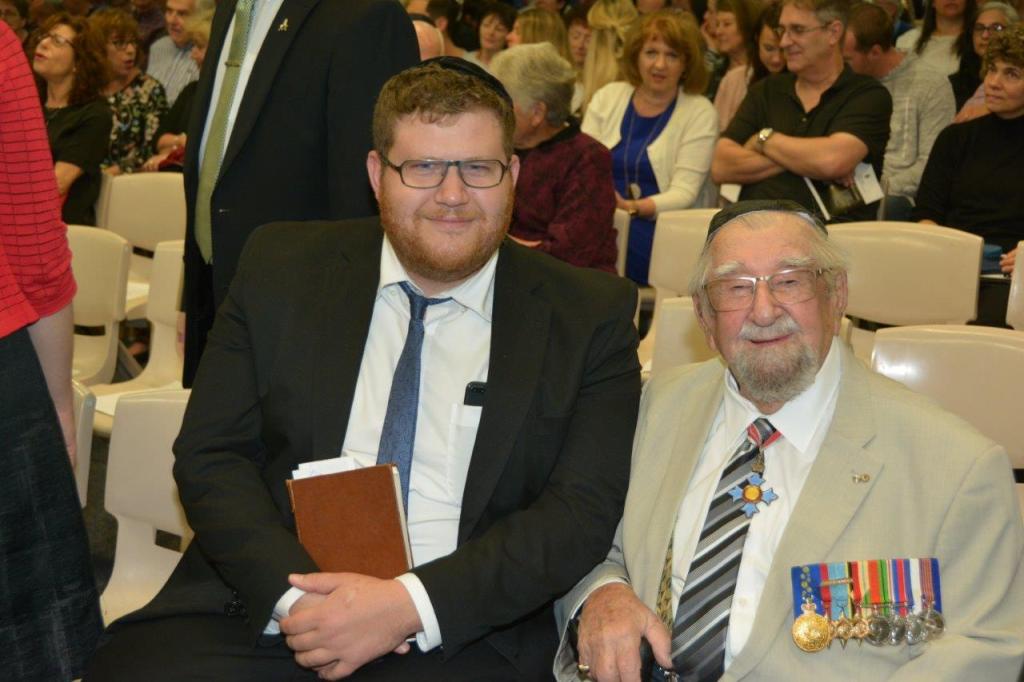
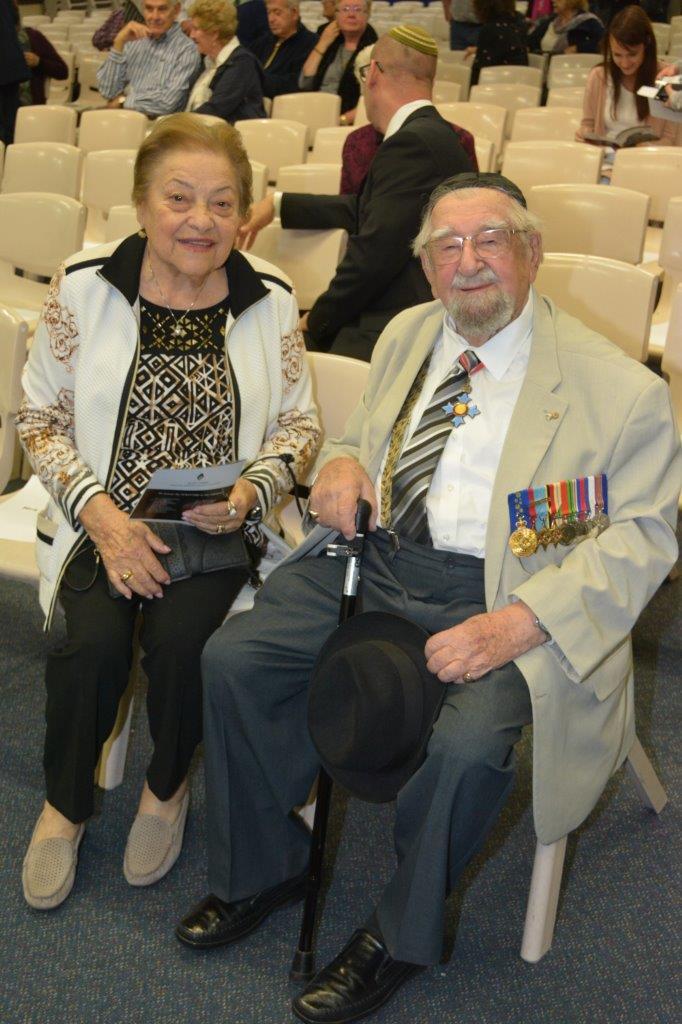
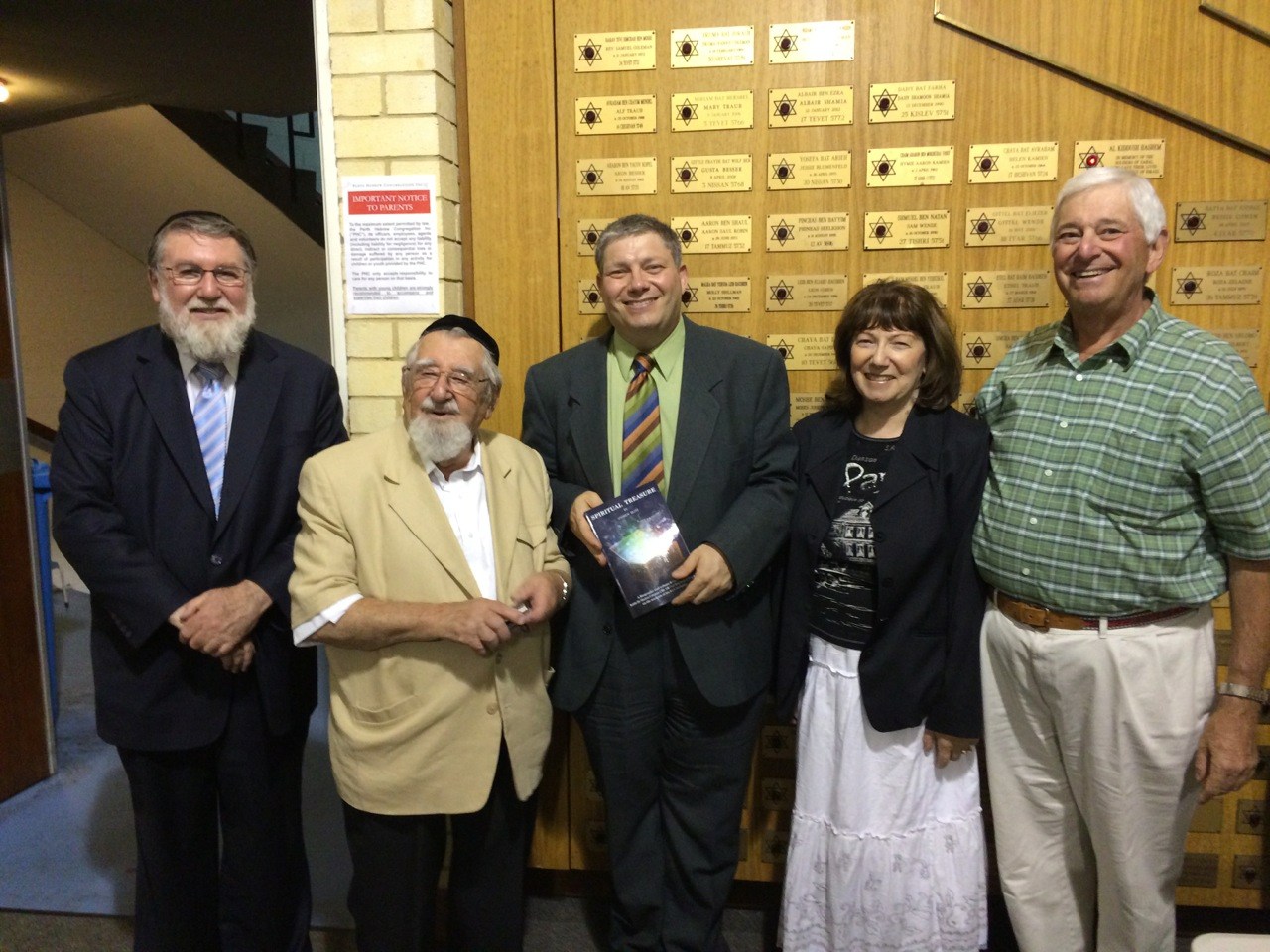
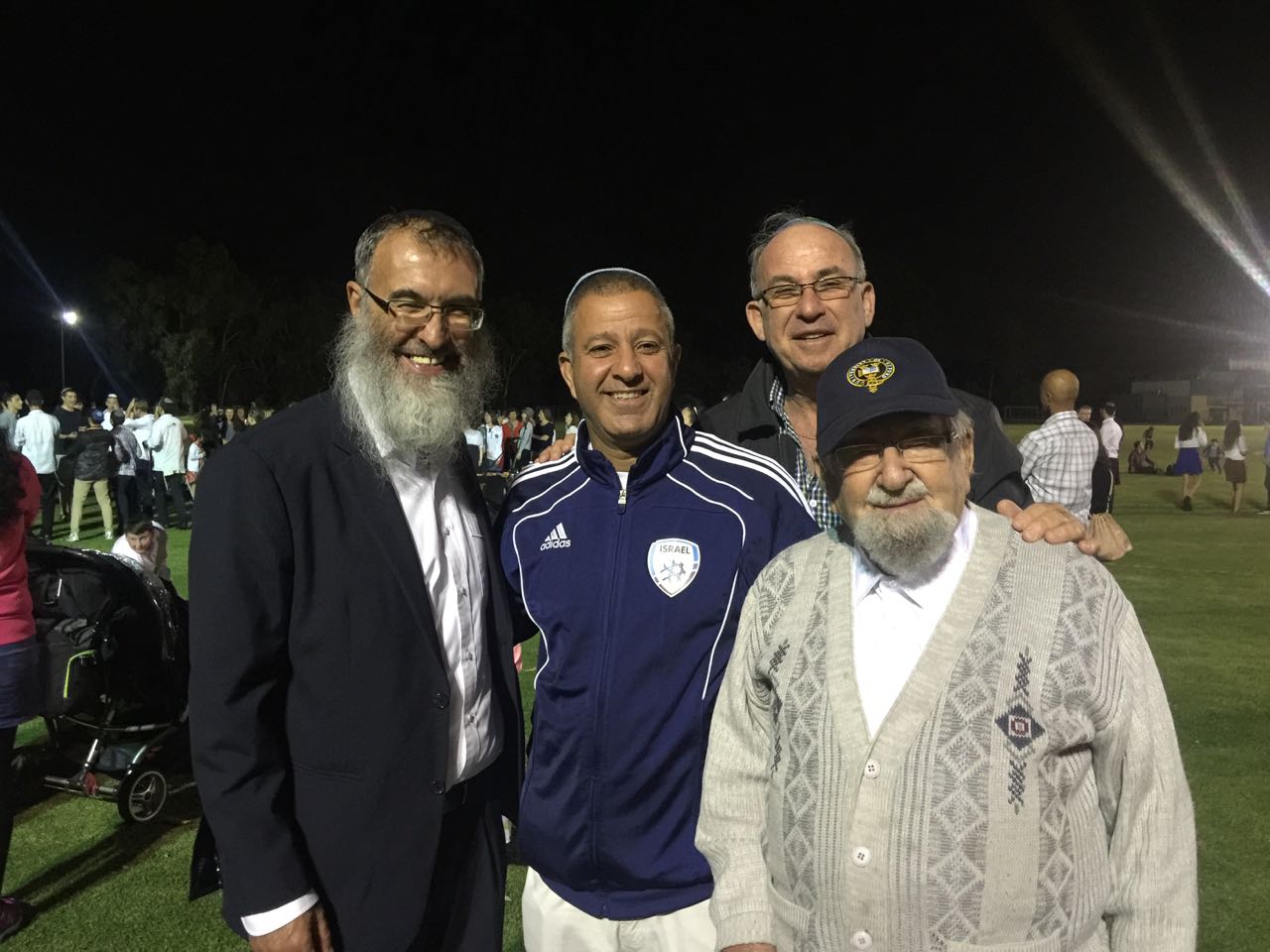
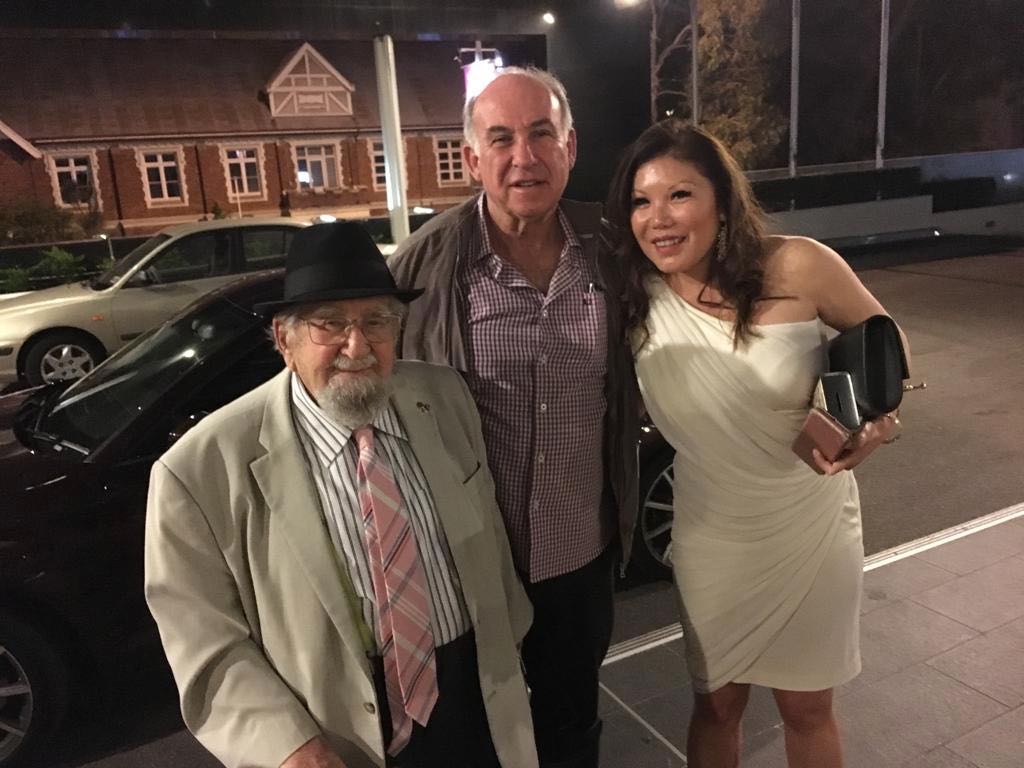
http://elirab.me/spiritual-treasure-book-launch-at-the-perth-hebrew-congregation/
Source: elirab.me/spiritual-treasure-book-launch-at-the-perth-hebrew-congregation/

Rabbi Coleman reminisces about his time in Bloemfontein as Jewish Spiritual Leader – 1949 to 1959. Perth, Australia 3 February 2016
Watch Video:
Source: youtu.be/GVUN1PtPD0g
5 December 2021

Rabbi Shalom Coleman – 103! – Mazeltov!

With long standing friends from the Bloemfontein days, Barney and Myra Wasserman, taken last week at the Perth Jewish Centre.
Here are photos and items reposted from my previous posts
The People’s Rabbi


Source: elirab.com/Coleman.html
SHALOM COLEMAN – RABBINIC DYNAMO
by Raymond Apple, emeritus rabbi of the Great Synagogue, Sydney
Bio about 10 years ago
Small in size but a giant in stature – that describes Rabbi Shalom Coleman, who changed the face of Judaism in Western Australia. Thanks to his refusal to give up or give in, a sleepy, distant community was set on the path to becoming a lively centre of orthodoxy. Rabbi Coleman is now over 90, hopefully with three more decades of work ahead until the proverbial 120.
Born into an orthodox family in Liverpool on 5 December, 1918, he was both a student and a man of action from his youth. At the University of Liverpool he gained a BA degree with honours, plus a Bachelor of Letters in Hebrew and Ancient Semitic Languages and Egyptology. His education was interrupted by World War II when he served with the Royal Air Force as a wireless operator/air gunner on missions in France and Western Europe, and in 1944 he was recruiting officer in England for the Jewish Brigade Group. He returned to university in 1945 as tutor, review writer and librarian. At Jews’ College, he gained rabbinic ordination in 1955. He also undertook postgraduate studies in Semitic languages at Pembroke College, Cambridge.
In 1947, at the suggestion of the then Chief Rabbi of South Africa, Dr Louis Rabinowitz, he went to the Potchefstroom Hebrew Congregation in the Transvaal and then served the Bloemfontein Hebrew Congregation in the Orange Free State from 1949-1960. Whilst in South Africa, he gained an MA at the University of Pretoria and a PhD at the University of the Orange Free State for a thesis entitled “Hosea Concepts in Midrash and Talmud”.
He was chairman of the Adult Education Council (English Section) of the Orange Free State and vice-president of the Victoria League, and introduced essay and oratory contests for schools. As a military chaplain he was active in the ex-service movement and was awarded the Certificate of Comradeship, the highest award of the MOTHS (Memorable Order of Tin Hats). He edited a Jewish community journal called “HaShomer” and an anniversary volume for the 150th anniversary of the Orange Free State.
In 1961 he came to Sydney as rabbi of the South Head Synagogue. He was a member of the Sydney Beth Din, vice-president of the NSW Board of Jewish Education and director of the David J. Benjamin Institute of Jewish Studies, for whom he edited three volumes of proceedings. He established a seminary for the training of Hebrew teachers. He lectured at the University of Sydney and wrote a thesis entitled “Malachi in Midrashic Analysis” for a DLitt.
In 1964 he received the Robert Waley Cohen Scholarship of the Jewish Memorial Council, using it for research into adult education in South-East Asia, Israel and the USA. In 1965 he became rabbi of the Perth Hebrew Congregation in Western Australia. He held office until retirement in 1985.
He determined to turn Perth into a Makom Torah. He obtained land as a gift in trust from the State Government for a new synagogue, youth centre and minister’s residence in an area where the Jewish community lived in Mount Lawley, replacing the original downtown Shule. At that time few members were Shom’rei Shabbat. Further initiatives led to a kosher food centre in the Synagogue grounds; a mikveh; a genizah for the burial of outworn holy books and appurtenances; a Hebrew Academy where high school students met daily, and extra classes four days a week at a nearby state school.
He taught for the Department of Adult Education of the University of WA and served on the Senate of Murdoch University. He was an honorary professor at Maimonides College in Canada, led educational tours to Israel for non-Jewish clergy and teachers, lectured to religious groups, schools and service organisations, and wrote booklets so people of all faiths could understand Jews and Judaism. Talks with the Minister of Education led to a Committee of National Consciousness in Schools, which he chaired; the Minister called his work “invaluable”.
Known as “the rabbi who never stops”, he was a member of the Karrakatta and Pinarroo Valley Cemetery Boards and wrote two histories for them to mark the State’s 150th anniversary in 1979 and the Australian Bicentenary in 1988. He was a member of the Perth Dental Hospital Board and chaired the Senior Appointments Committee and then the Board. The North Perth Dental Clinic is now known as the Shalom Coleman Dental Clinic.
A Rotarian since 1962, first in Sydney and then in Perth, he was President 1985/86 and Governor 1993/9, representative of the World President in 1995, and representative of WA Rotary at the UN Presidential Conference in San Francisco in 1995. He was co-ordinator of the District Ethics and Community Service Committees and chaired the Bangladesh Cyclone Warning Project, which saved the lives of 40,000 residents of the chief fishing port of Bangladesh. He received a certificate of appreciation as District Secretary of Probus Centre, South Pacific. He has spoken at conferences all over the world and is a patron of the Family Association of WA. He has been a vice-president of Save the Children Fund since 1967.
He was a foundation member of the Perth Round Table and their first lecturer. He is still an honorary military chaplain and was on the executive of the Returned Services League and edited their “Listening Post” from 1989-91. He holds high rank in Freemasonry. He is honorary rabbi at the Maurice Zeffertt Centre for the Aged and was made a Governor of the Perth Aged Home Society in 2004. After several years as president of the Australian and New Zealand rabbinate his colleagues made him honorary life president. Several times he went to NZ as interim rabbi for Rosh HaShanah and Yom Kippur. He shines in the pulpit, and is a fine chazzan. He has received awards from the Queen and the Australian Government. The University of WA gave him an honorary LLD in April 2000. He is still, despite his age, a prolific speaker and writer; travels widely and his services are in constant demand.
In 1942 he married Bessie Anna Daviat, who died in 1982. He has a son in Melbourne, a daughter in the USA, grandchildren and great- grandchildren. He married Elena Doktorovich in 1987; she died in 1997.
Small in stature, Rabbi Coleman is a giant in energy, enterprise and enthusiasm, and is one of Australia’s best known figures. Largely thanks to him, Judaism is strong in Perth, with five synagogues, a Chabad House, a Jewish school, a fine kashrut system, and many shi’urim; his own Talmud shi’ur is legendary. No longer is it a struggle to be Jewish in Western Australia.





http://elirab.me/spiritual-treasure-book-launch-at-the-perth-hebrew-congregation/
Source: elirab.me/spiritual-treasure-book-launch-at-the-perth-hebrew-congregation/

Rabbi Coleman reminisces about his time in Bloemfontein as Jewish Spiritual Leader – 1949 to 1959. Perth, Australia 3 February 2016
Watch Video:
Source: youtu.be/GVUN1PtPD0g
KehilaLinks
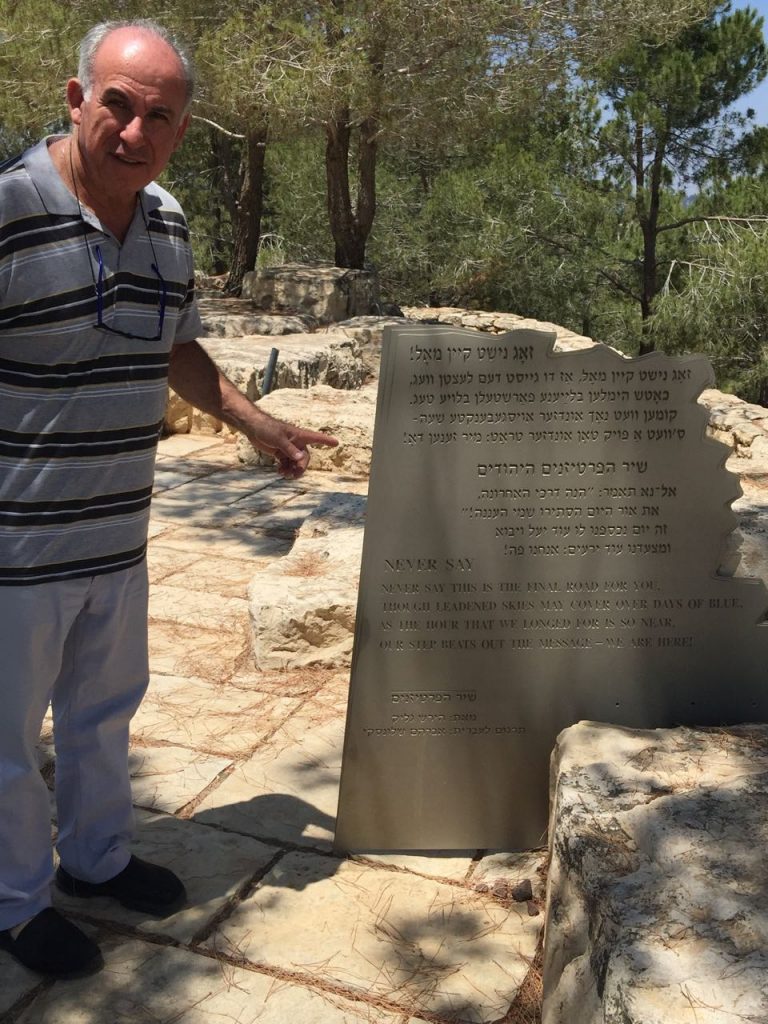
Lithuania Alita (Alytus) Aran (Varena) Balbieriškis Birzh (Birzai) Druskieniki (Druskininkai) Keidan (Kedainiai) Kibart (Kybartai) Kopcheve (Kapciamiestis) Koshedar (Kaisiadorys) Mariampol (M…
Source: elirab.me/kehila
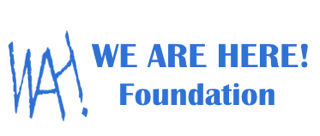
Eli Rabinowitz

Amir Maimon has been appointed by the Israel Ministry of Foreign Affairs as the new ambassador to Australia.
Source: www.jwire.com.au/a-new-israeli-ambassador-to-australia/



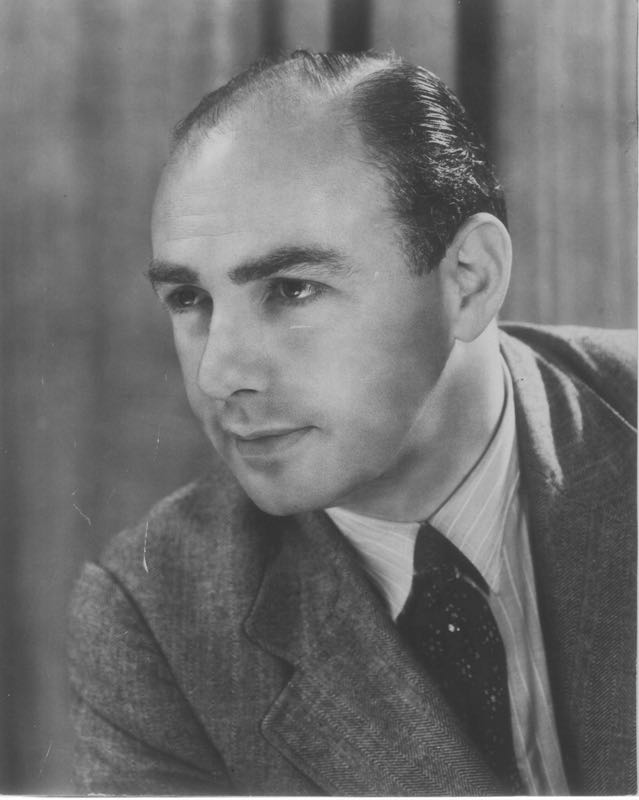
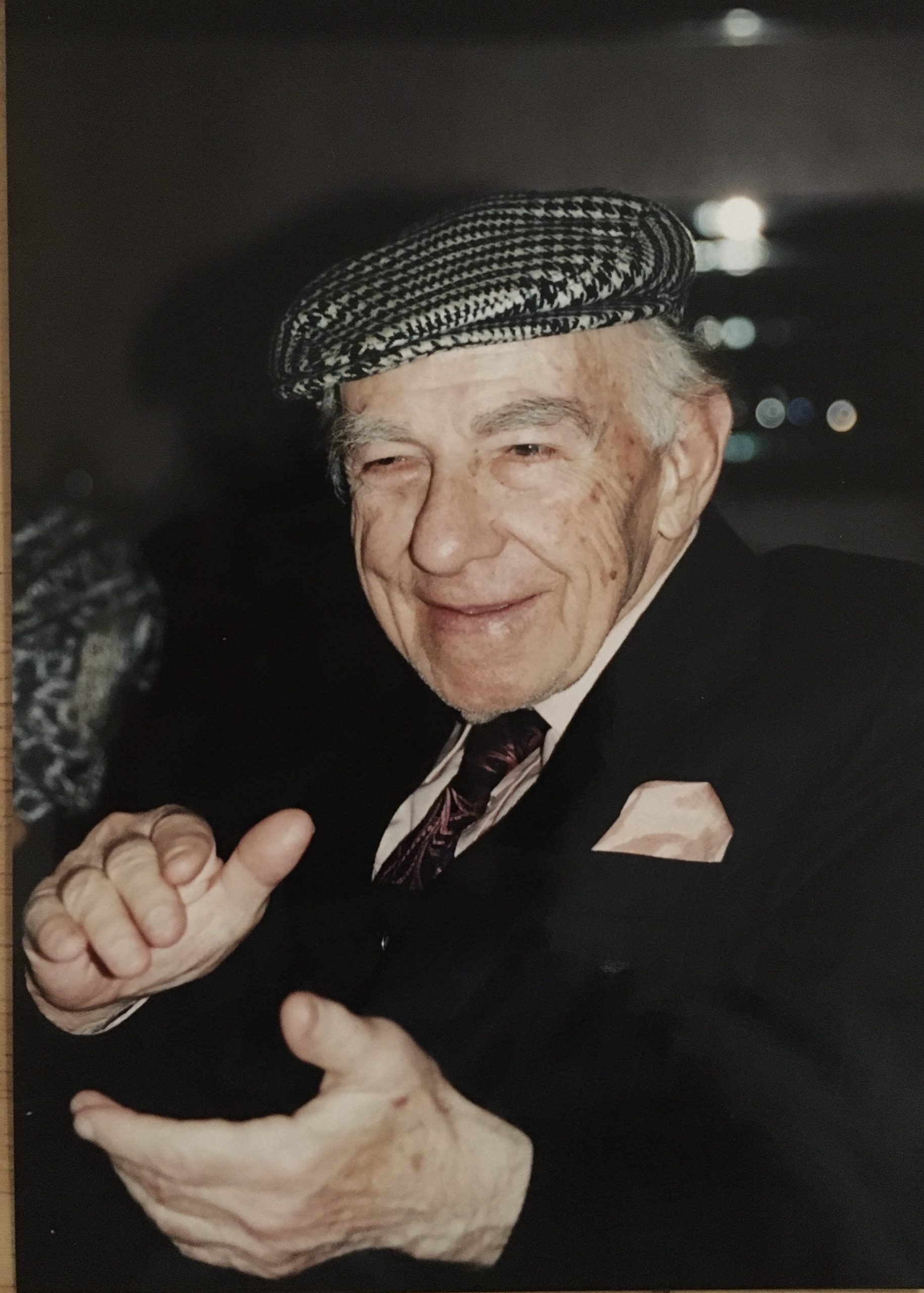
Harry’s abridged ancestral family tree (extends to over 20 generations)
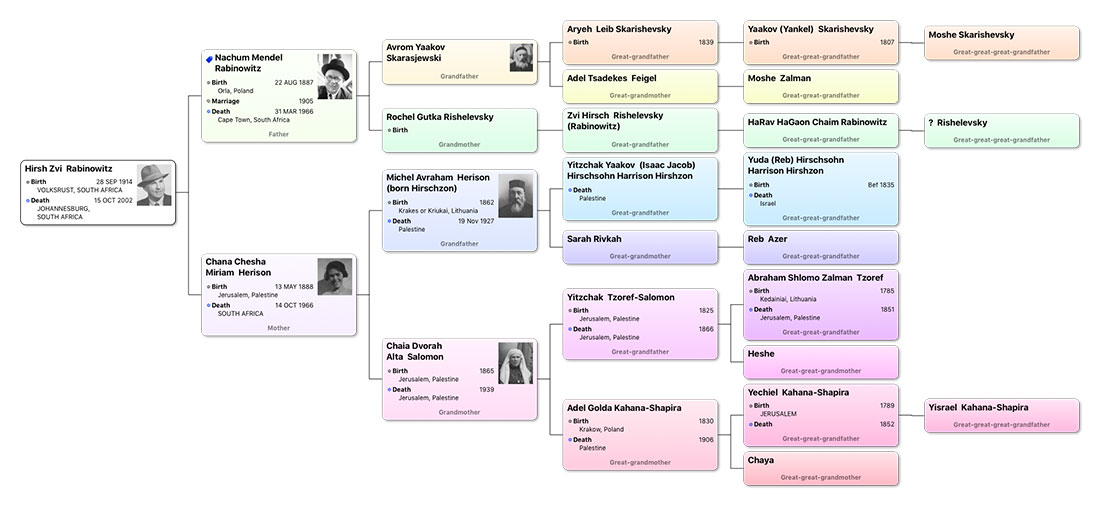
Harry was born in Volksrust, Transvaal, South Africa on 28 September 1914.
Volksrust is a town in the Mpumalanga province of South Africa near the KwaZulu-Natal provincial border, some 240 km southeast of Johannesburg, 53 km north of Newcastle and 80 km southeast of Standerton.
Source: en.wikipedia.org/wiki/Volksrust

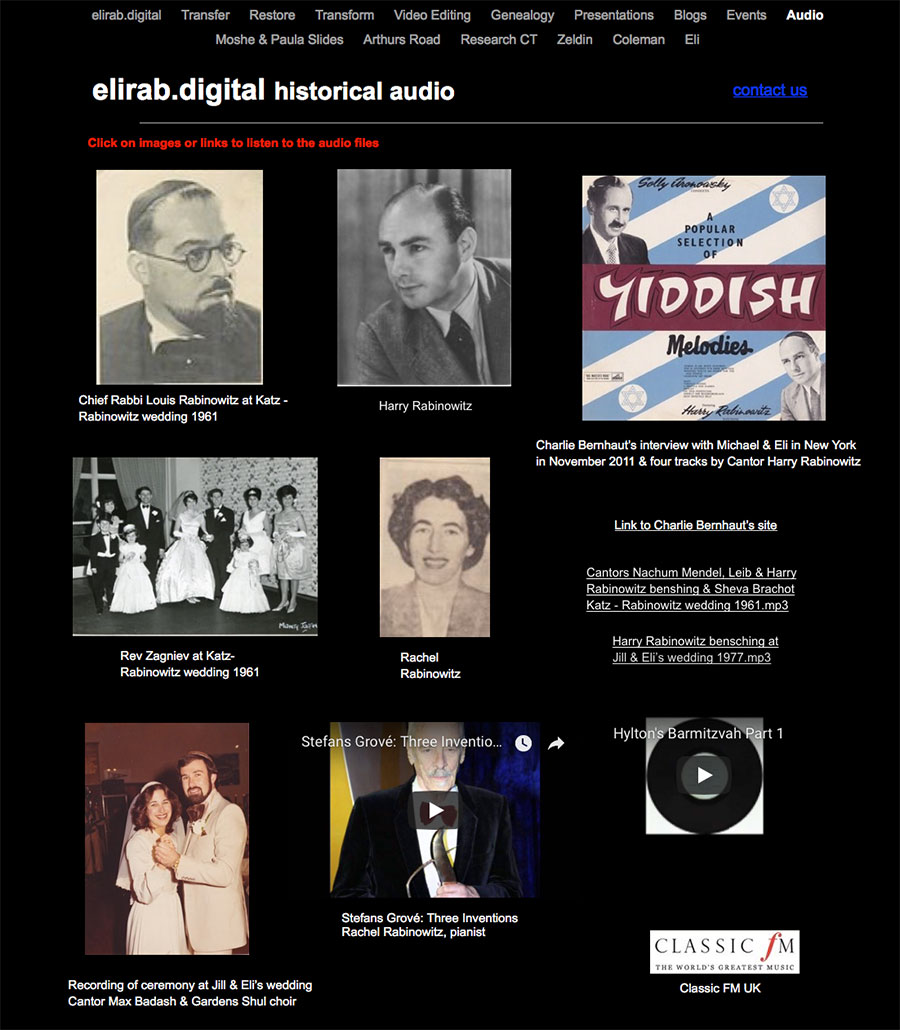
With his parents and two older brothers Leib and Isaac, who were born in Jerusalem.
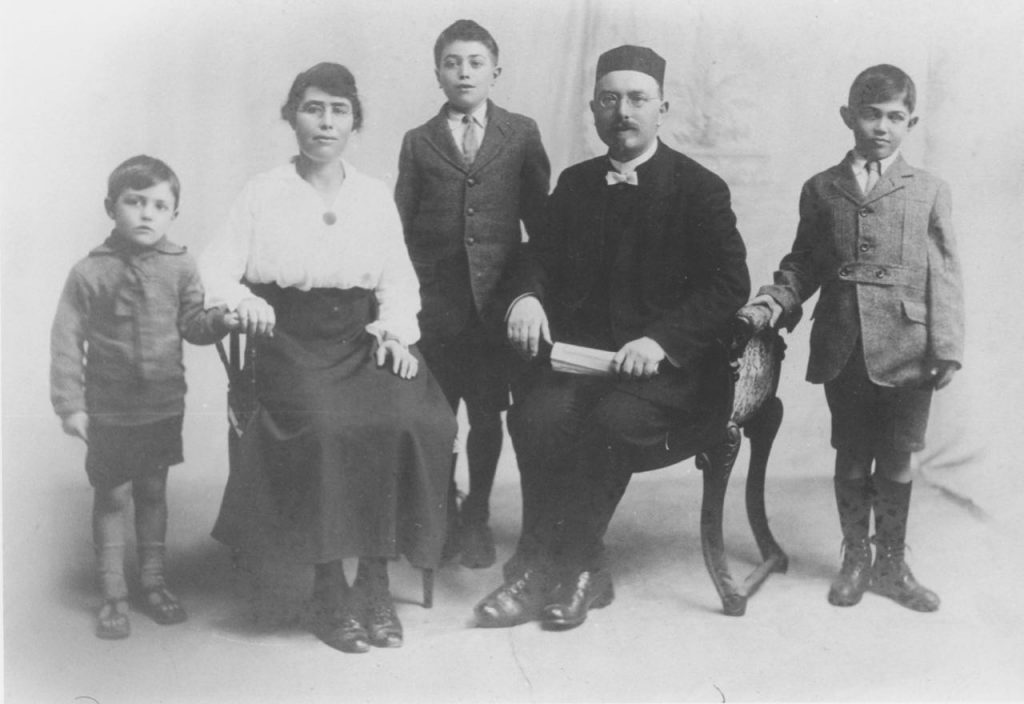
His two younger sisters Rachel and Sarah were born in Cape Town.
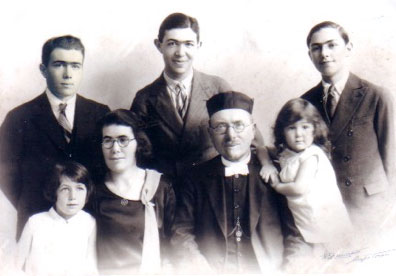
Harry was a musician and cantor, a baritone who sang in many languages in concerts, recitals, operattas and on radio
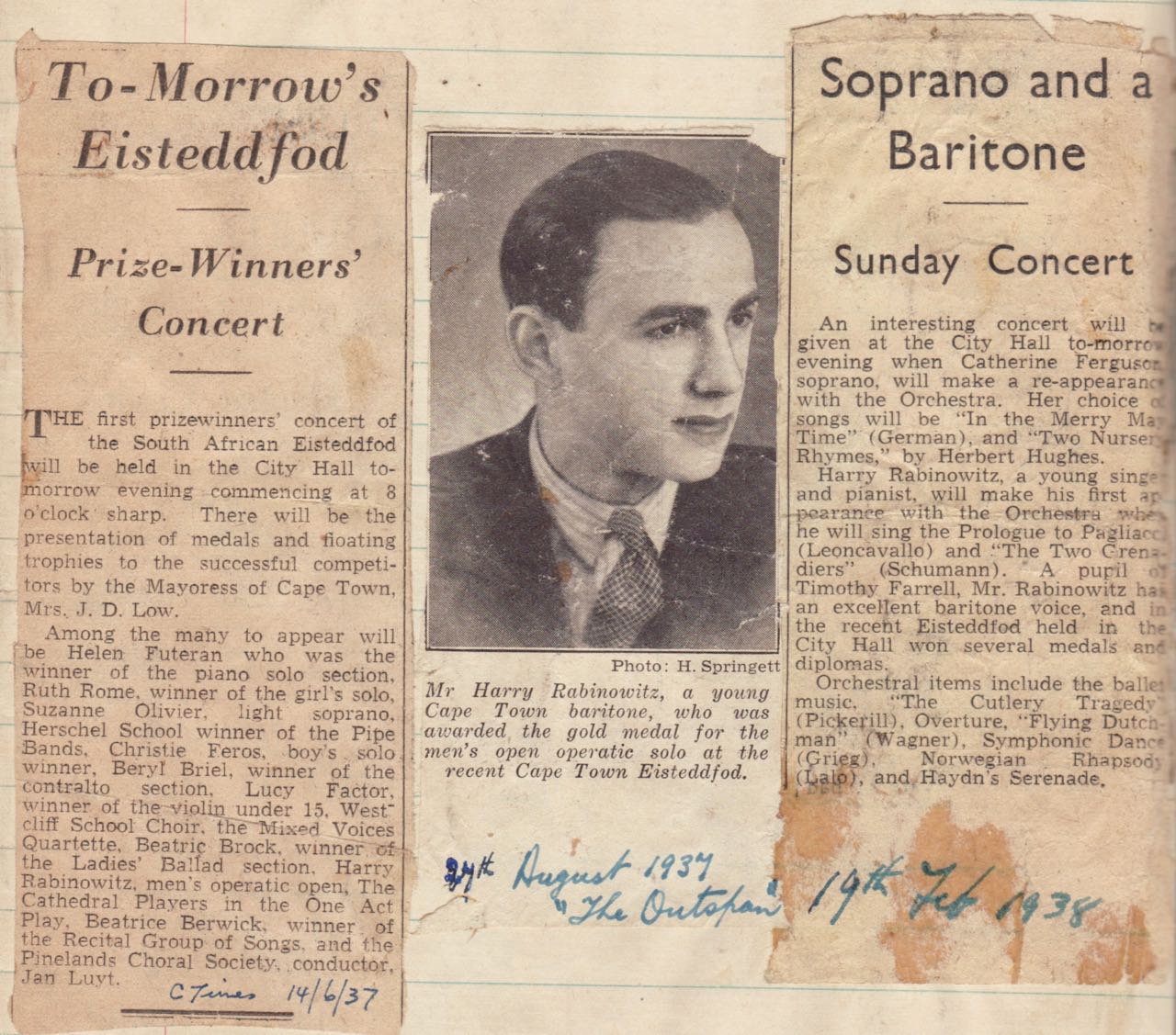

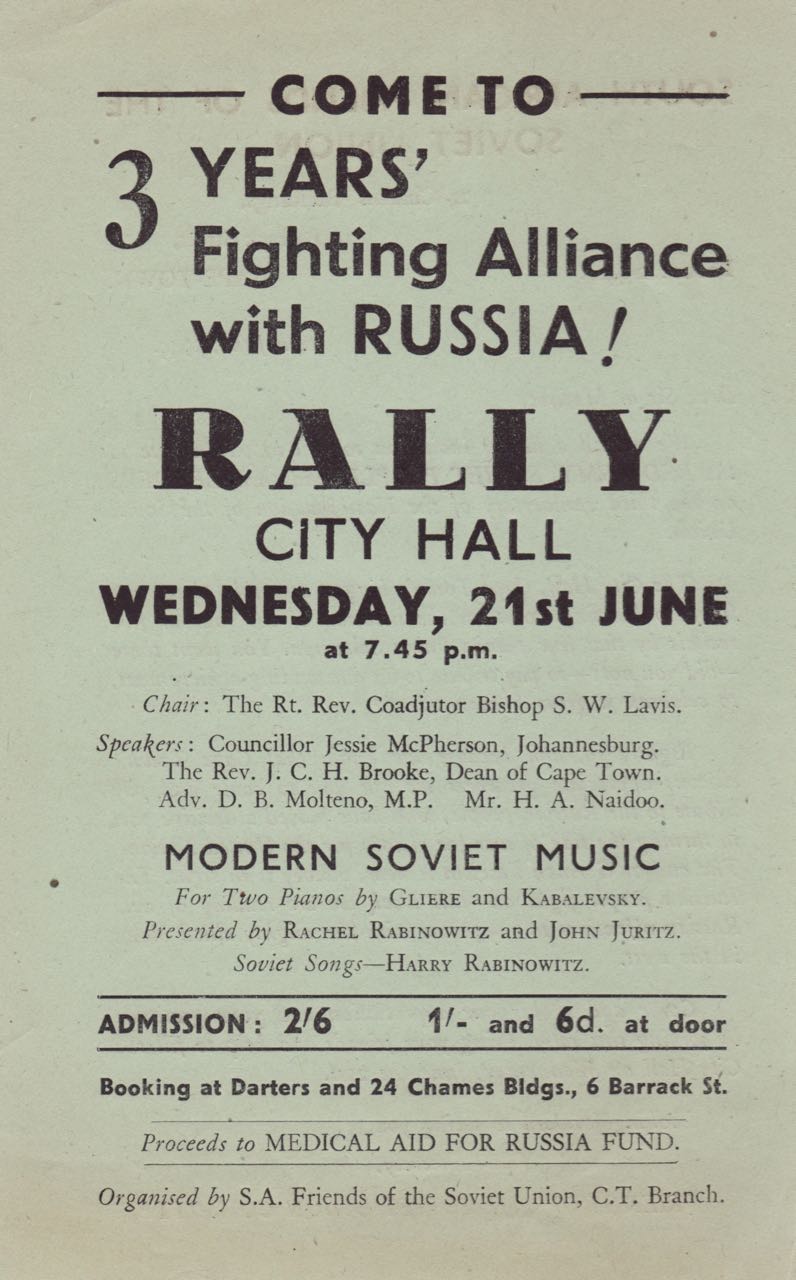
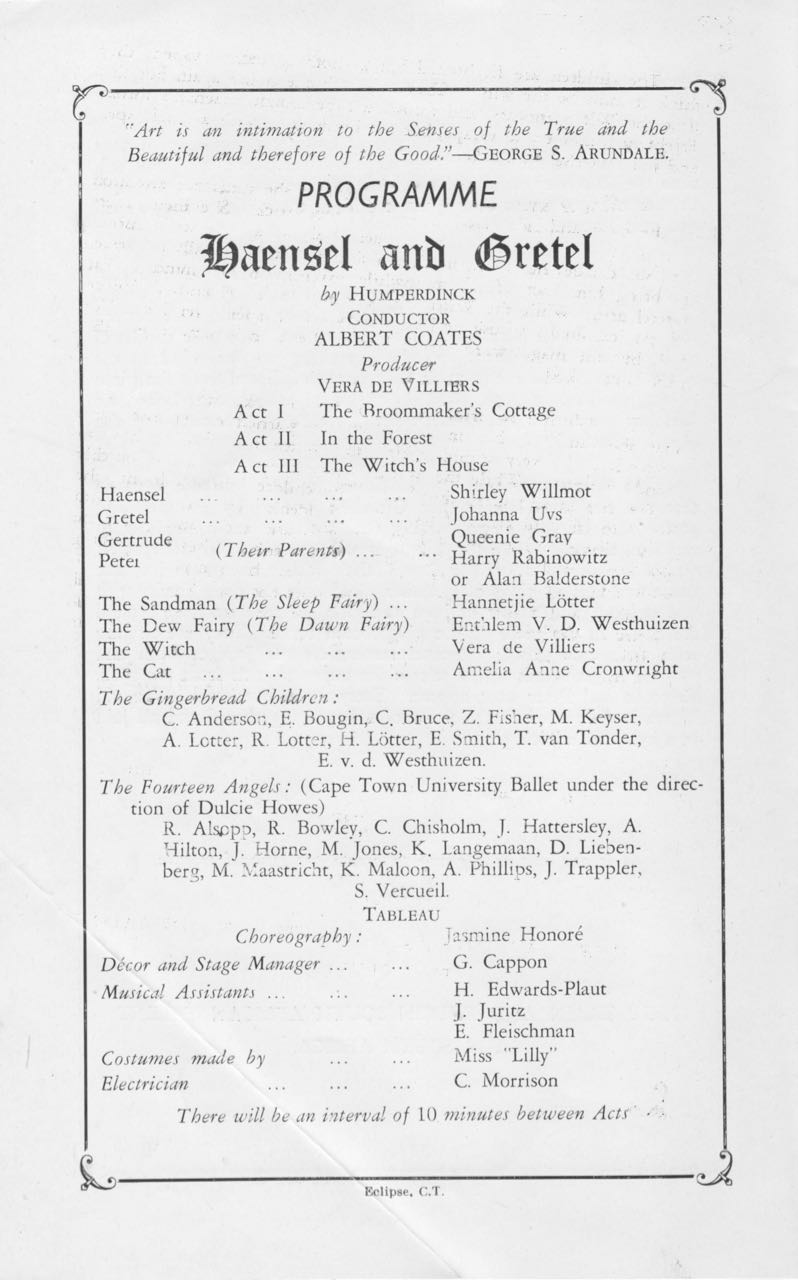
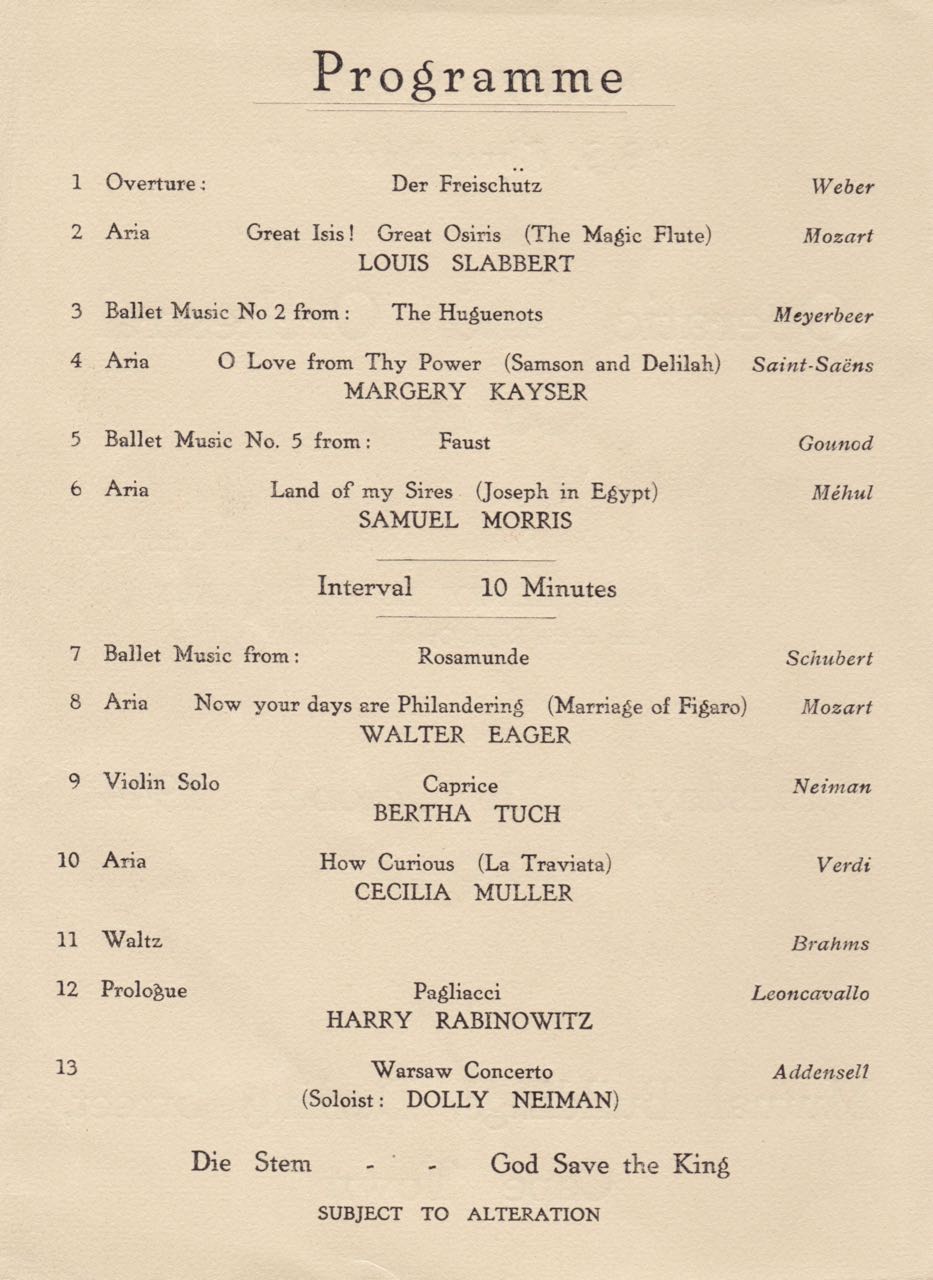
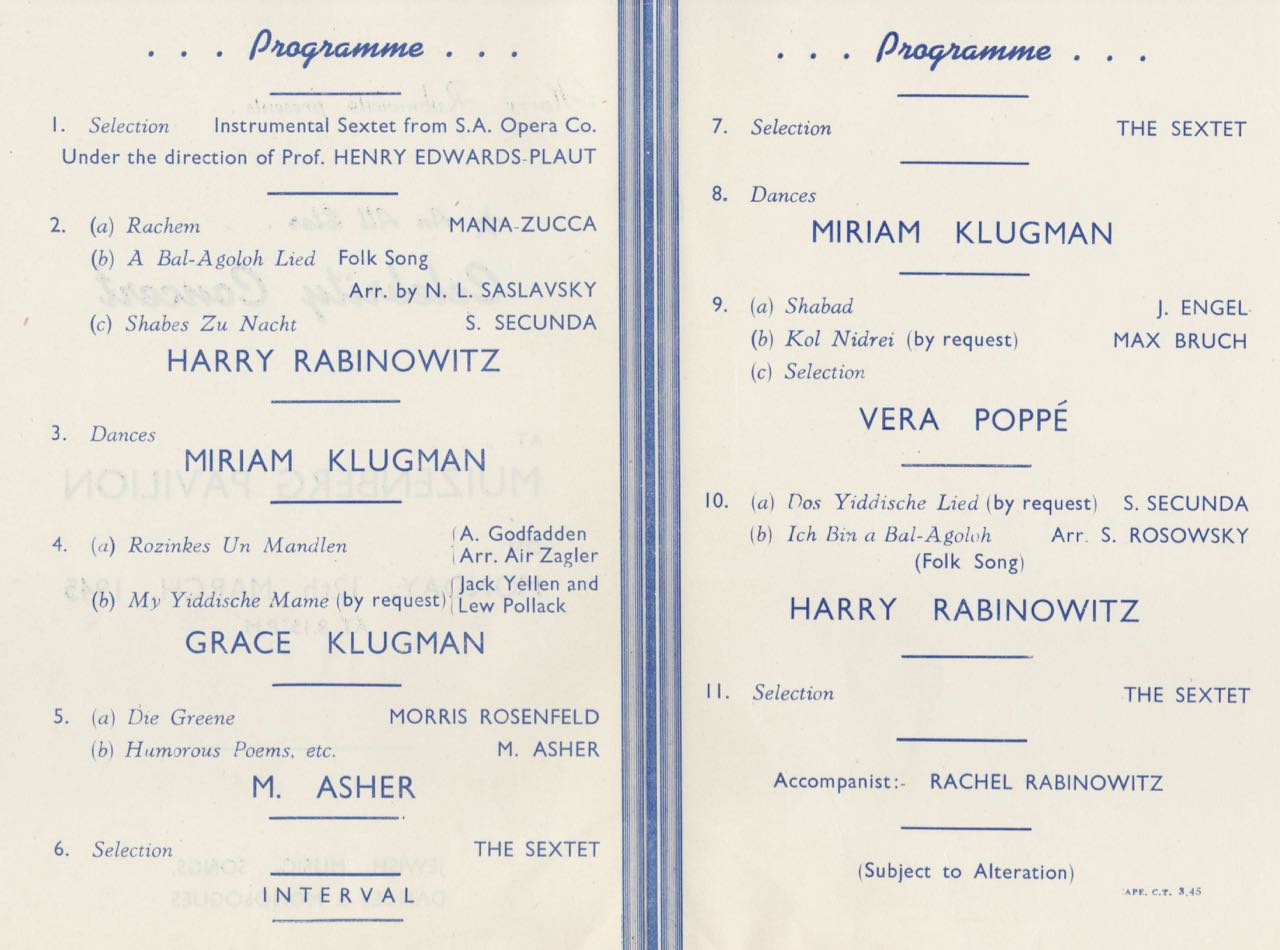
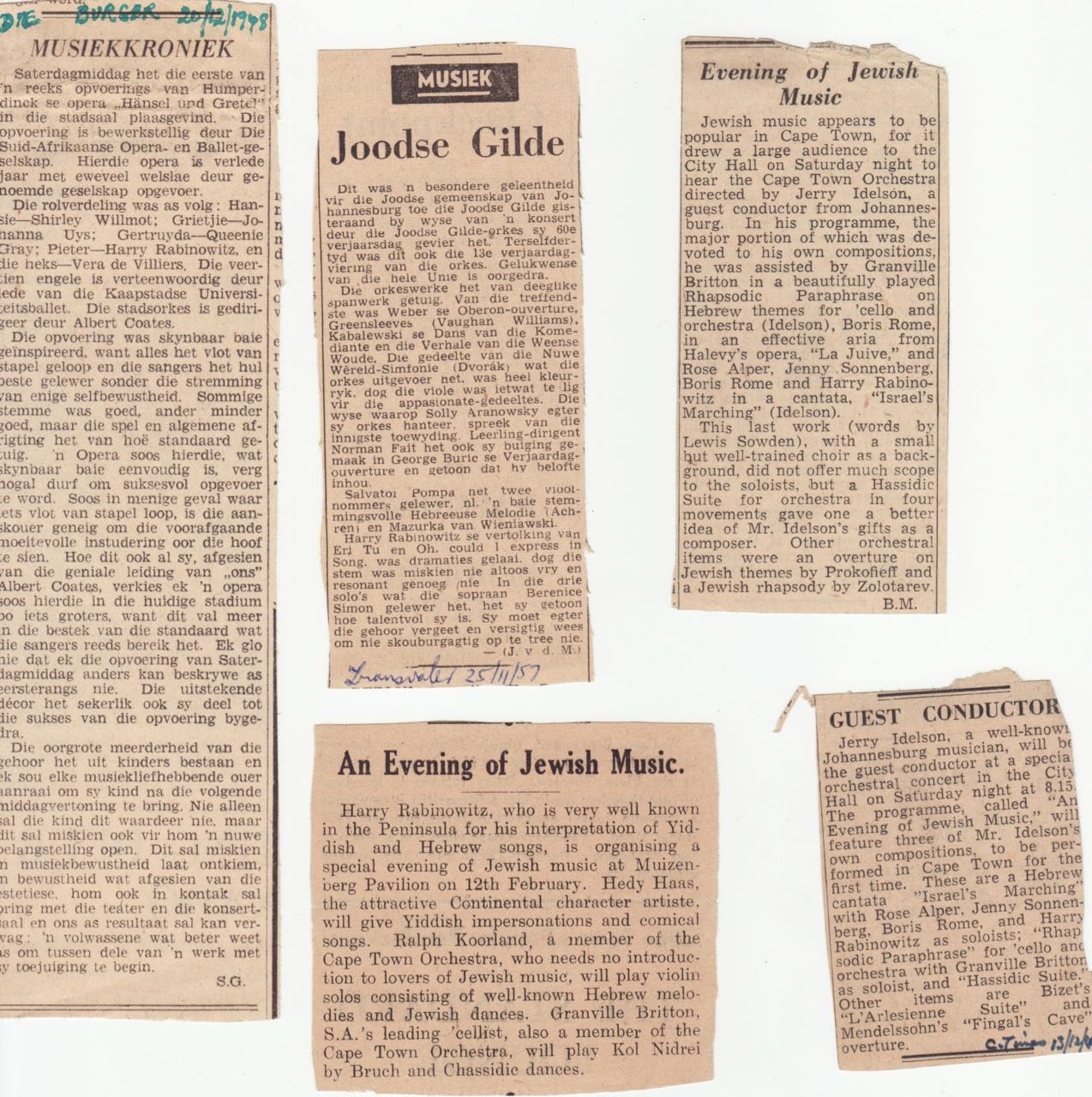
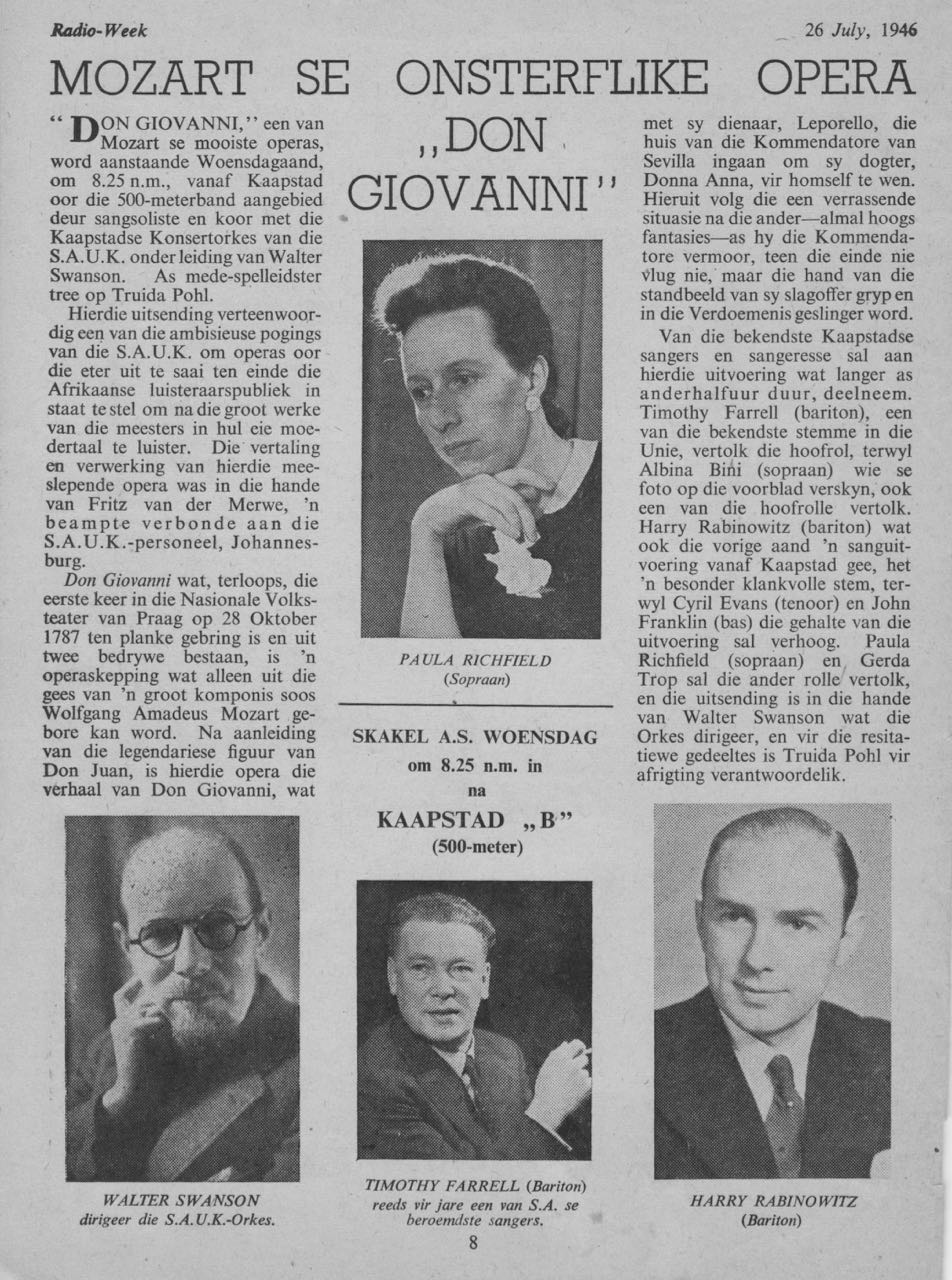
On the radio
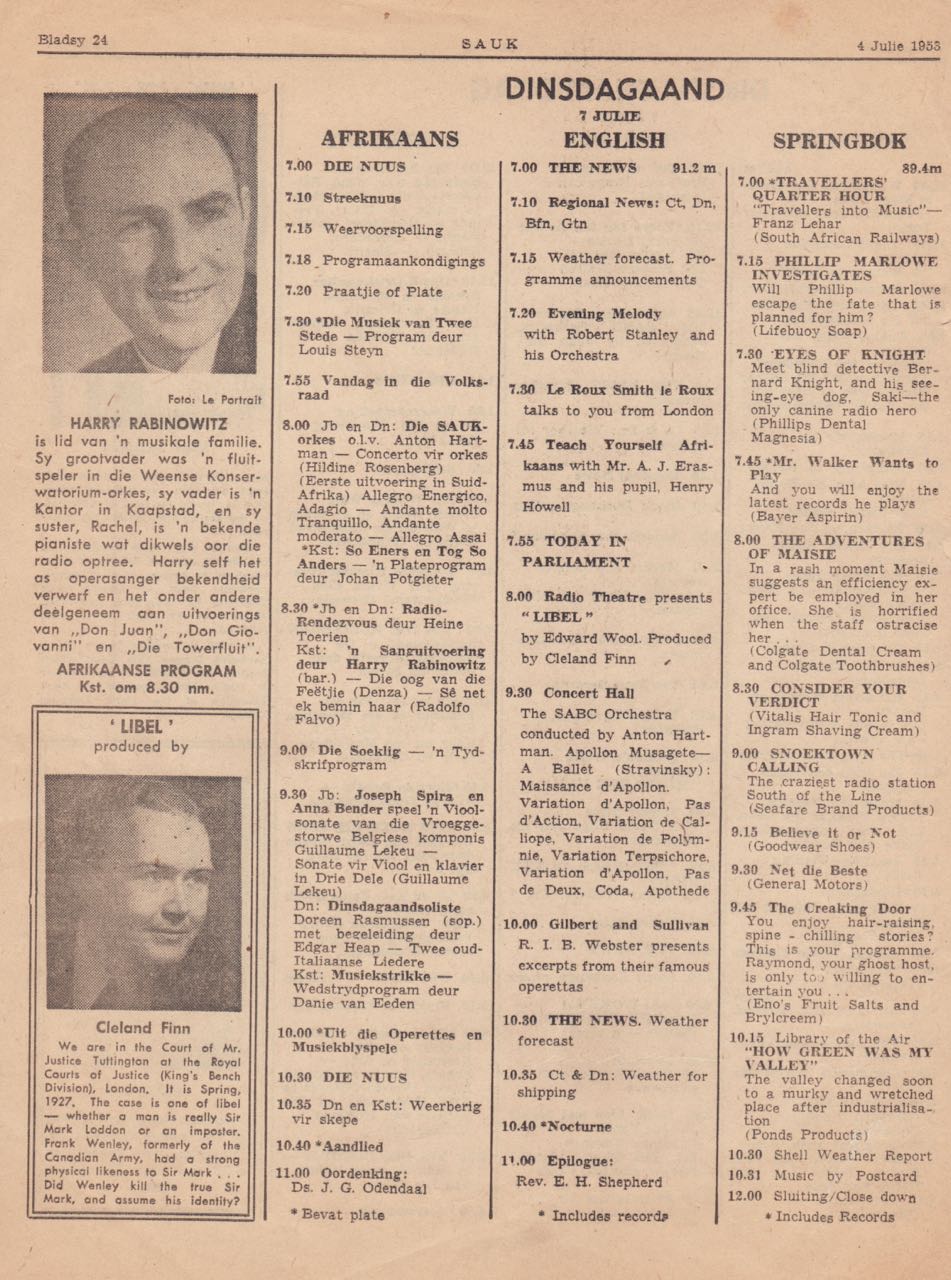
He was often accompanied by his sister Rachel Rabinowitz, a concert pianist.
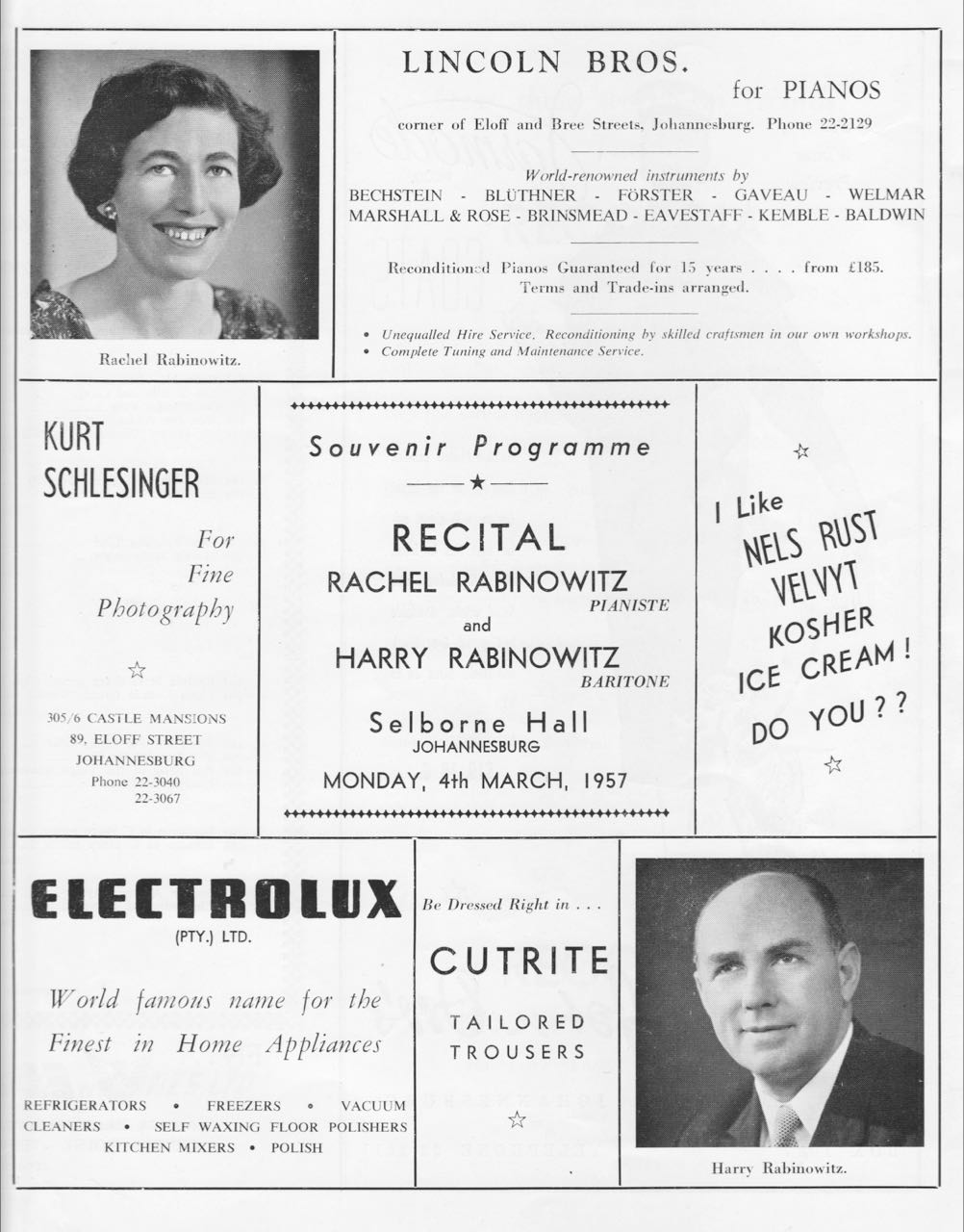
Harry made a record of Popular Yiddish Melodies with Solly Aronowsky’s orchestra on His Masters Voice
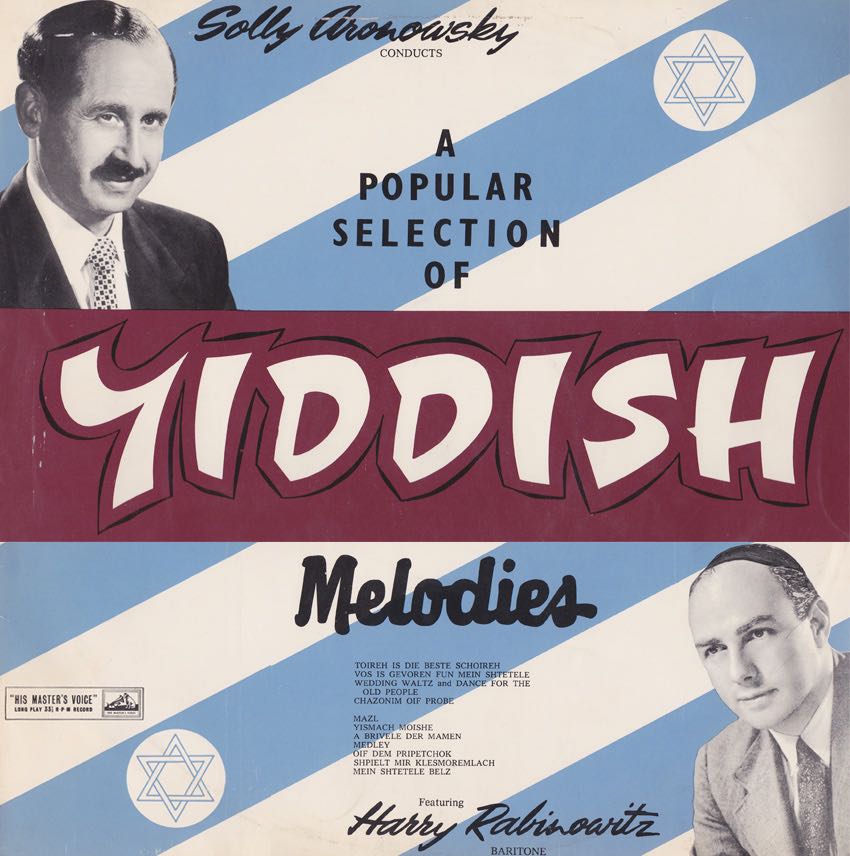
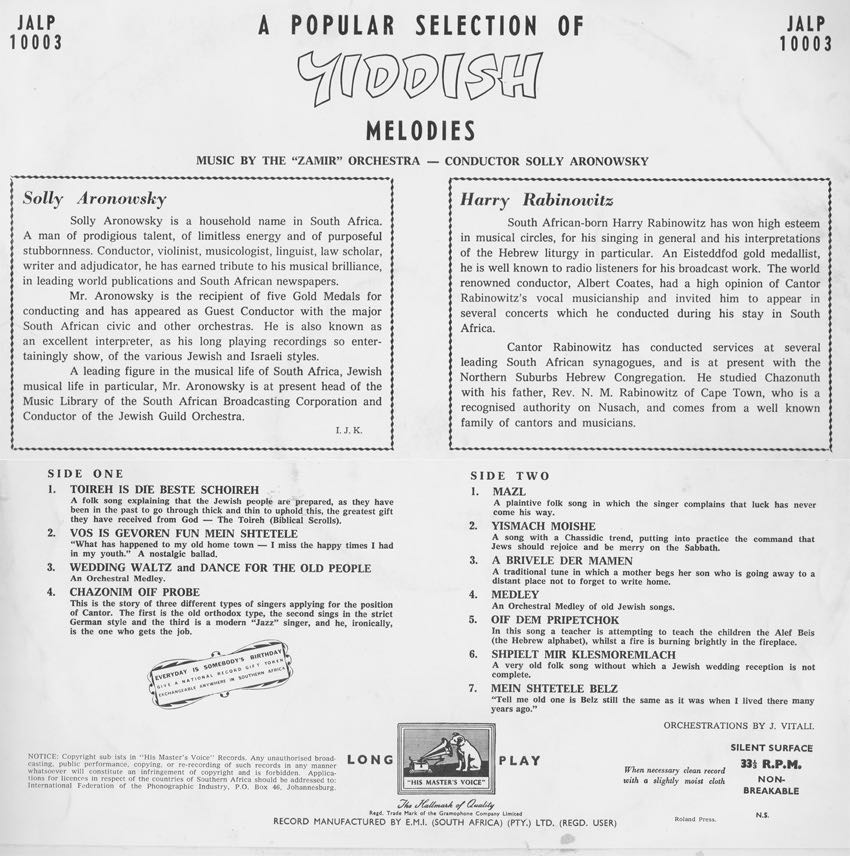
Chazonim Oif Probe – an entertaining track from the LP
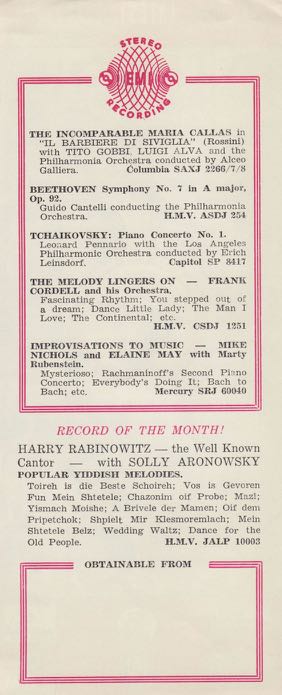
A review

With my mother, Rachel
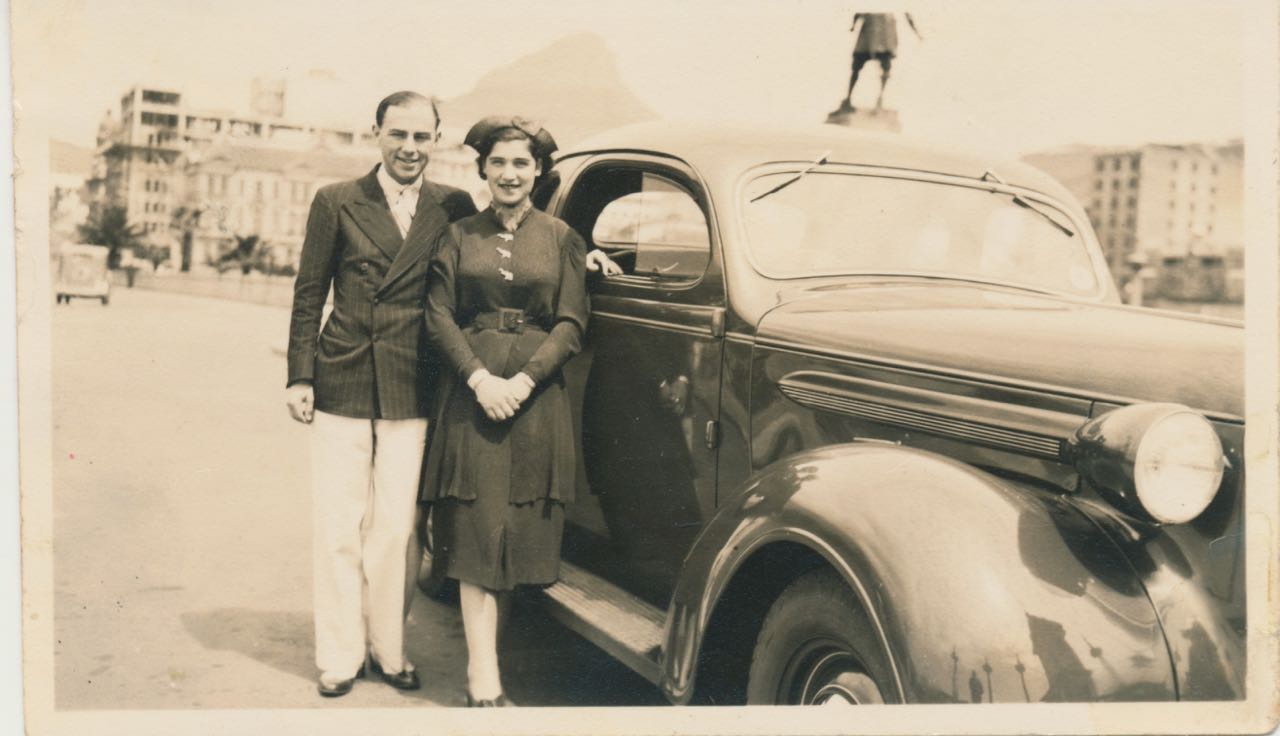
With me, my mom, aunty Rachel and my bobba, Chana Chesha Miriam
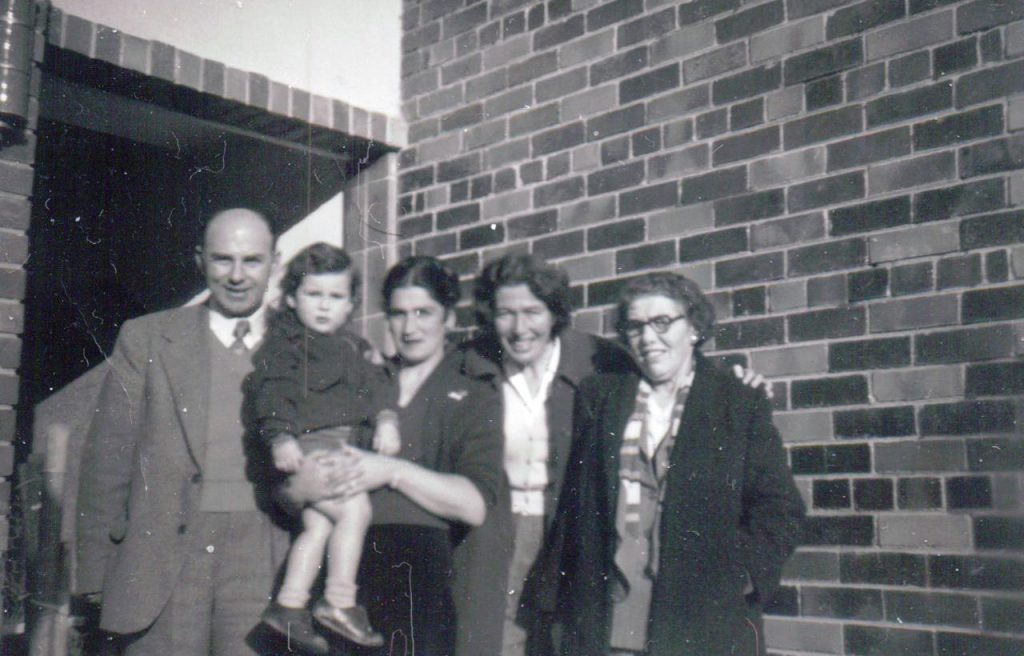
With other world class chazonim in Johannesburg, including Moshe Stern and Johnny Gluck.
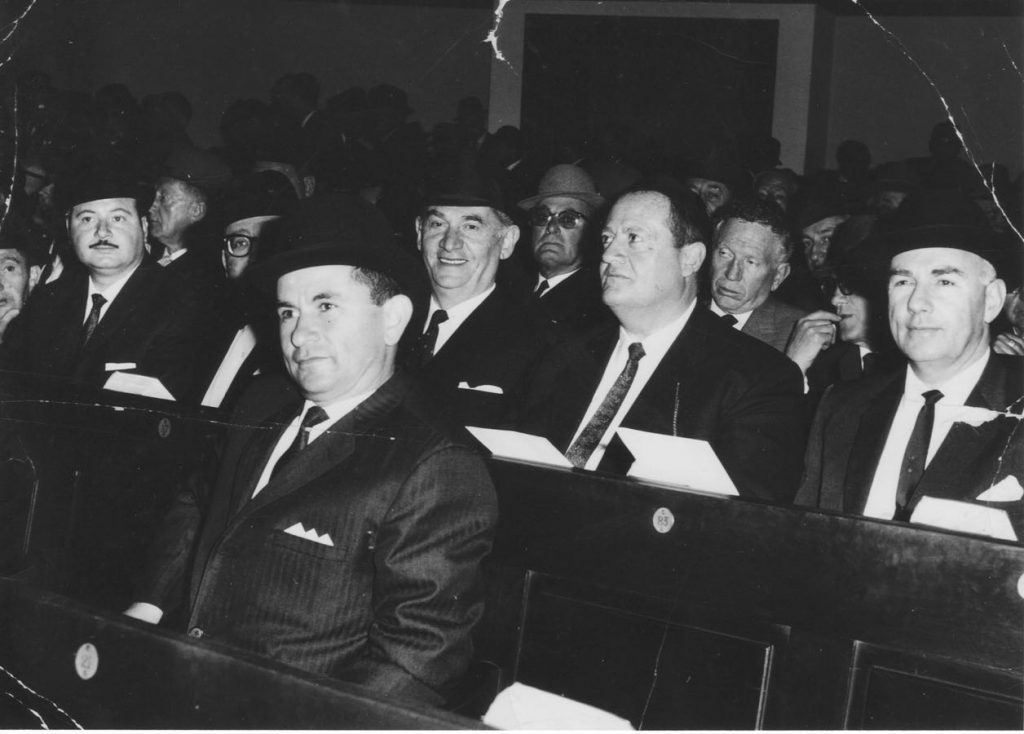
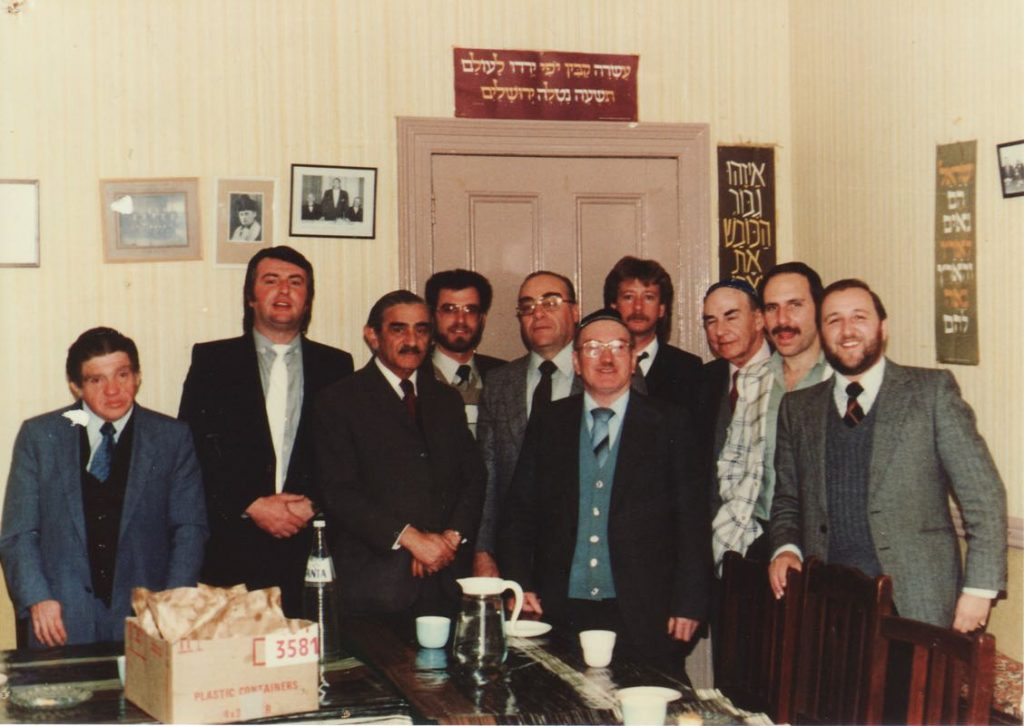
Singing with his choir
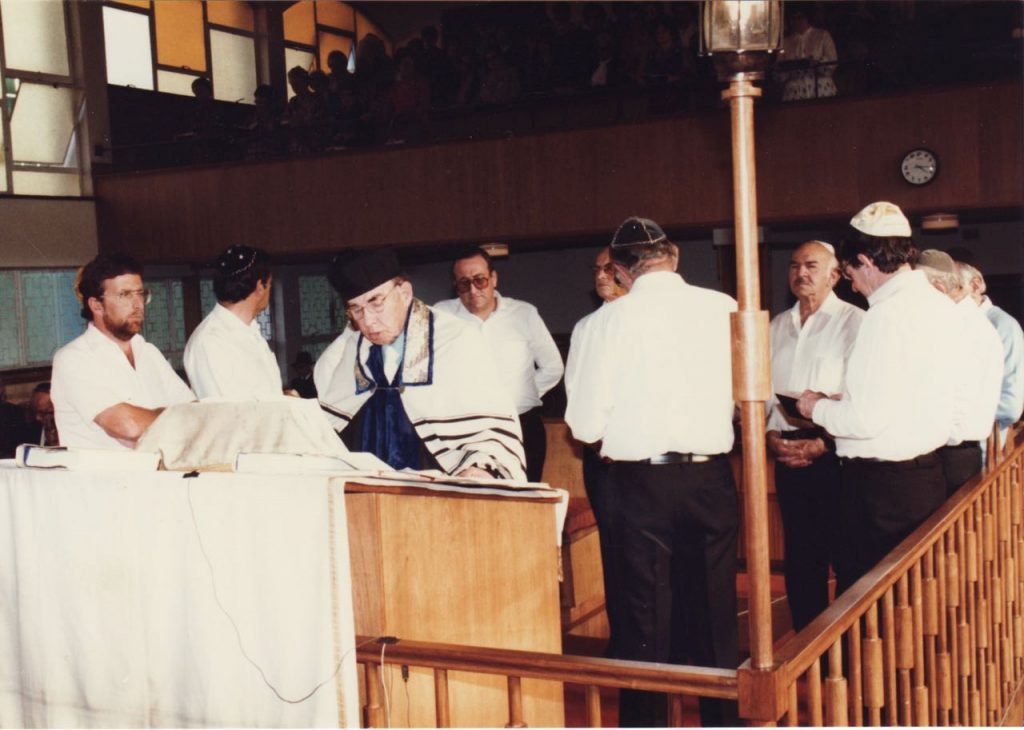
His matseva at West Park Cemetery, Johannesburg
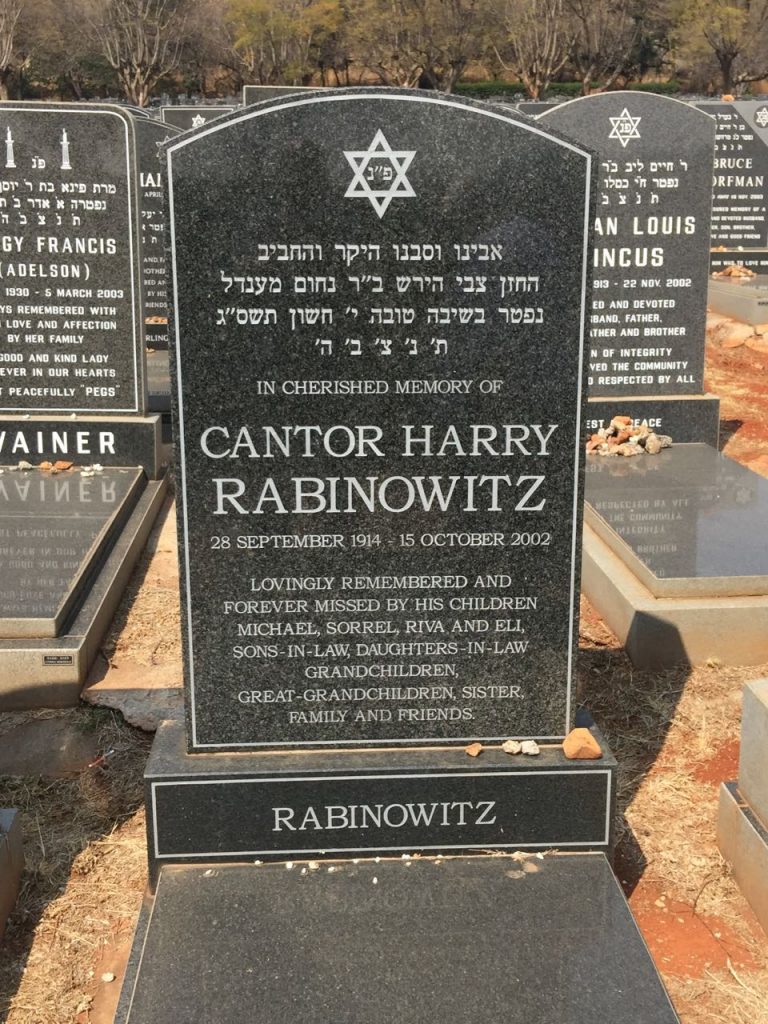
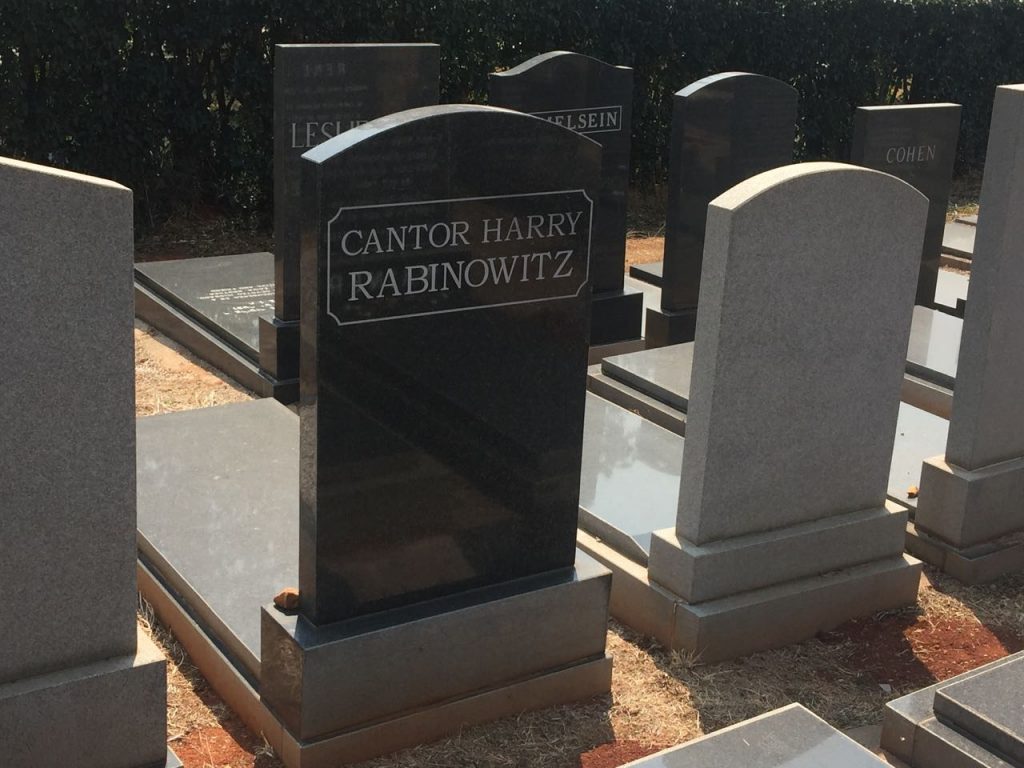
With Jill in shul at yahrzeit memorial board
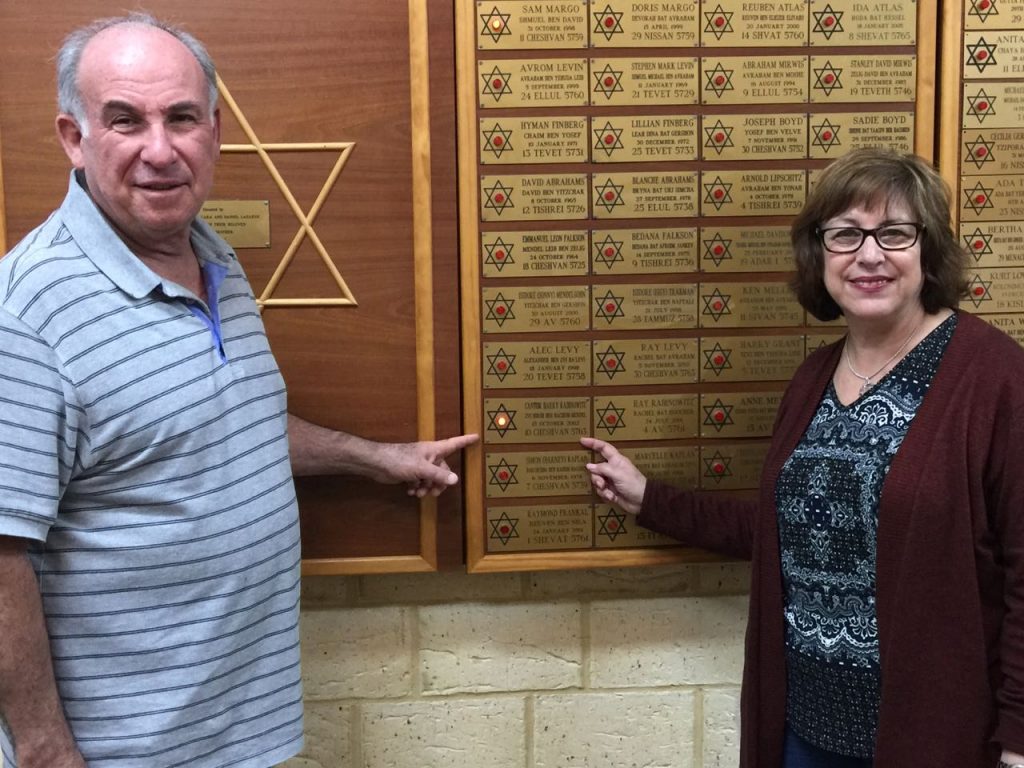

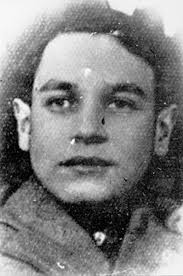

For Upstanders – Founded by Eli Rabinowitz
Source: wah.foundation


Phillip Maisel talks about Hirsh Glik and Zog Nit Keynmol. Melbourne, Australia 22 August 2017
Source: youtu.be/3vYDXOQ_lSk


Introduction to the Partisans’ Song : Phillip Maisel
At most Holocaust commemorations we sing the Partisans’ Song, Zog Nit Kein’mol, composed by Hirsh Glick. Hirsh Glick was my friend, and I was privileged to be the first, together with two others, to whom Hirsh read the words of the song.
My name is Phillip Maisel. I work as a volunteer at the Jewish Holocaust Centre where I am responsible for the testimonies’ department. I am a Holocaust survivor.
In 1941 I was managing a stationery store in Vilna when the Soviet Union occupied the city. At the same time Hirshke Glick was working in a similar store. I was 19; he was 21. Both of us were members of a Soviet trade union and we attended a compulsory weekly Communist indoctrination meetings at 8:00 pm each Thursday evening. Hirshke and I became friends, and after each meeting we would walk along the banks of the Wilia River where Hirshke, already well known for his work as a poet, would discuss his poetry with me.
The two of us were young, and wanted to build a new world.
Hirshke was a very interesting person. He was quiet, dreamy and always very introspective. He told me that he would compose complete poems in his head, as it were, and write them down only when they were finished– and then never change a single word.
In June 1941 the Germans occupied Vilna. In September they created the ghetto. In the ghetto I maintained contact with all my former trade union friends, including Hirshke. He, however, was sent to work at a camp called Rezsche, but brought back later to the Vilna ghetto after that camp was liquidated. It was then that he wrote the Partisans’ Song, Zog Nit Kein’mol.
He first read it to three of us – in a cellar located in Straszuna Street. I was present with my sister, Bella, together with Maishke, who had been the secretary of our trade union. We sat there and Hirshke read to us in the light of a candle placed on top of a box. He subsequently read the poem to fellow members of a literary society. The tune to which he then sung the words was composed by Russian Jewish composers, Dmitri and Daniel Pokrass.
On 1 September 1943, on the first day of liquidation of Vilna Ghetto I was deported to Estonia. I was attached to a mobile garage and was working as an automotive electrician for the Germans. The workshop travelled all over Estonia.. One day we were sent to a camp – Goldfilz – where I stayed for two nights and where Hirsh Glick was imprisoned. Even in camp he was respected as a poet. When we met, the first question I asked Hirsh was: “How can I help you?” His response was: “I need freedom.” When I replied that unfortunately I could not give him freedom, he asked me if I could by any chance give him a spoon. In camp, a spoon was a treasure. It enabled him to eat his soup, the main meal in the camp. I gave him my spoon which had a sharpened handle and which could serve as a knife.
During his captivity Hirsh continued to compose songs and poems. His death, however, was always shrouded in mystery. The historical records state that, In July 1944, with the Soviet Army approaching, Glick escaped, that he was never heard from again, and that it was presumed he had been captured and executed by the Germans, reportedly in August 1944. However, as a volunteer at the Jewish Holocaust Centre where I record Holocaust survivors’ testimonies, I interviewed a Mr Samuel Drabkin in 1993. He told me that he and his four brothers were in the camp with Hirshka. He described to me in detail how Hirshka perished. One night, he said, while returning from work to the camp, Hirsh and his fellow prisoners, among them Samuel Drabkin and his four brothers, noticed that there was a hive of activity in the camp and the Camp Commandant was drunk. Forty prisoners, including Hirsh Glick, entered a toilet block, climbed through the window, broke through the camp’s wire enclosure and escaped. Estonian guards fired at them, and of the 40 escapees, only 14 survived. Hirsh Glick, however, did not survive: Mr Drabkin’s brother saw him shot and killed.
It has been said that Hirsh Glick wrote the Partisans’ Song while the Warsaw Ghetto uprising was taking place. I believe, however, that the song was actually written for a specific partisan – a young Jewish partisan girl with whom Hirshke was in love. But no matter. Hirshke’s song – the Partizaner Lid – sung so long ago by Jews in the Vilna ghetto, has become the anthem of those of us who have survived the Shoah.
Zog Nit Kein’mol – es vet a poyk ton undzer trot: mir zaynen do! “Our step beats out the message: we are here!”
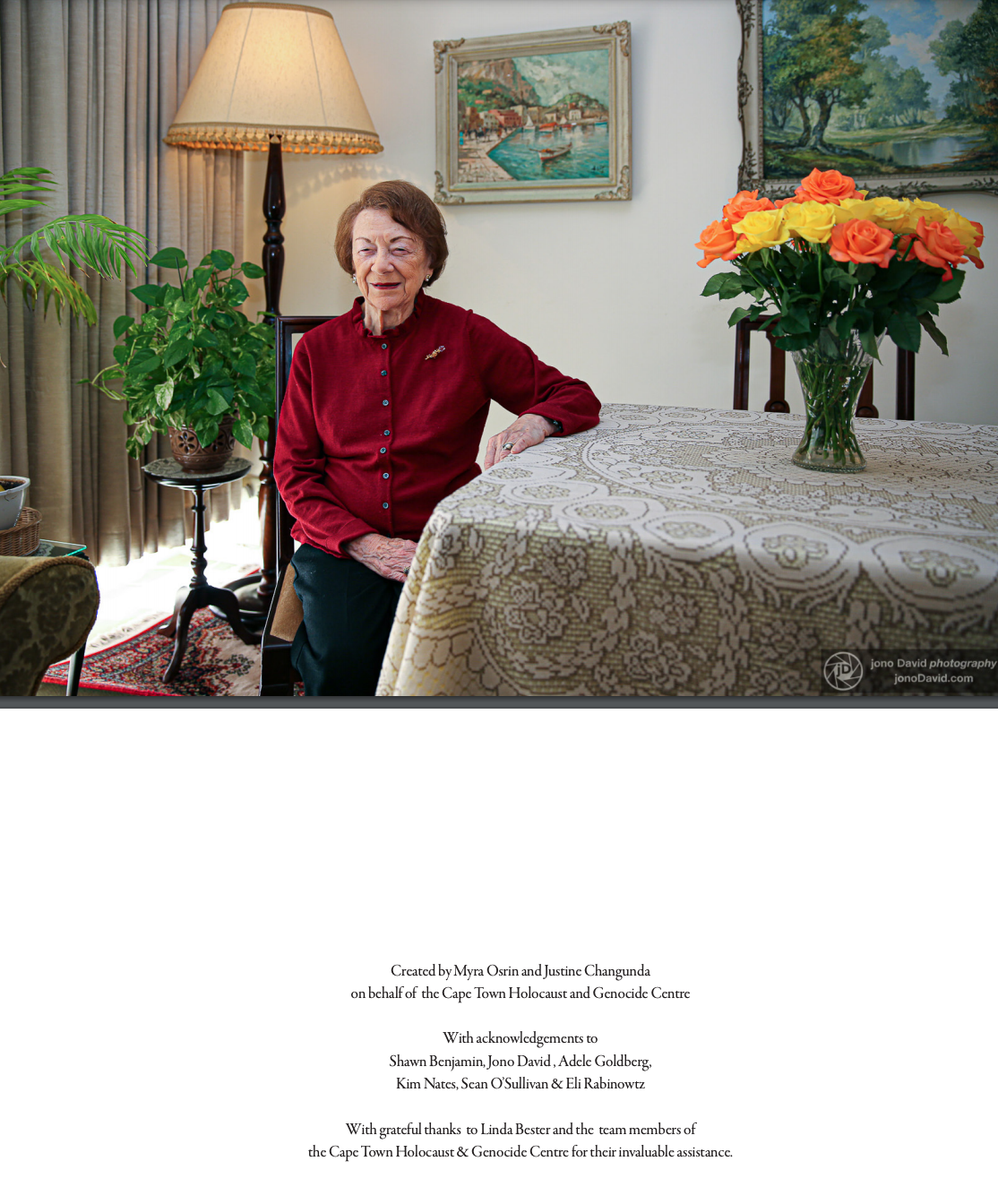
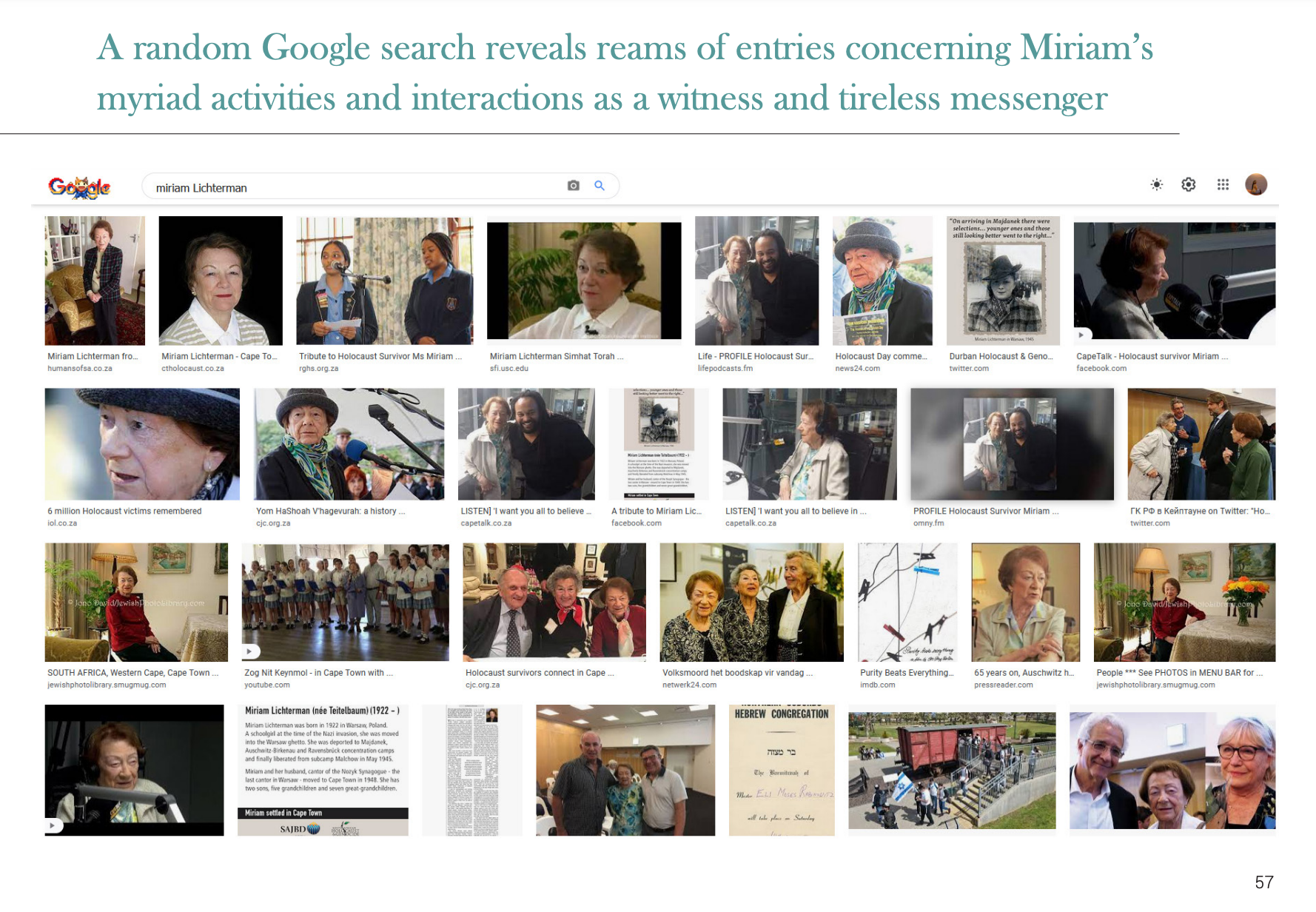
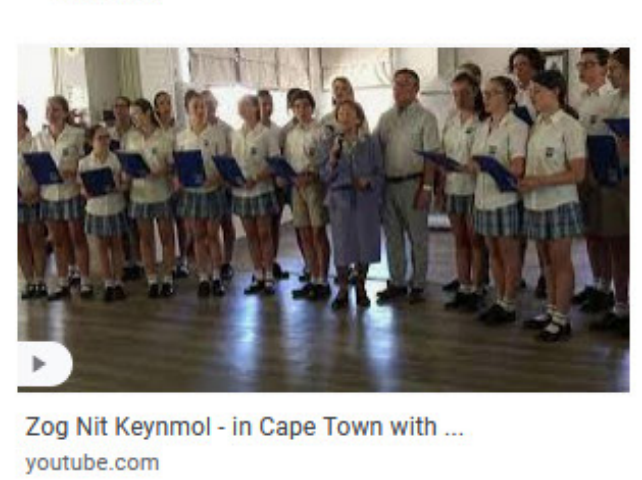
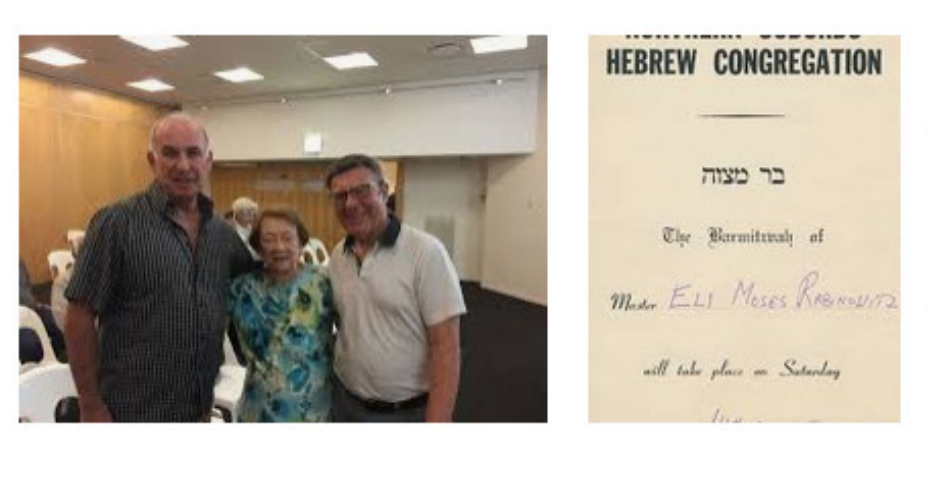
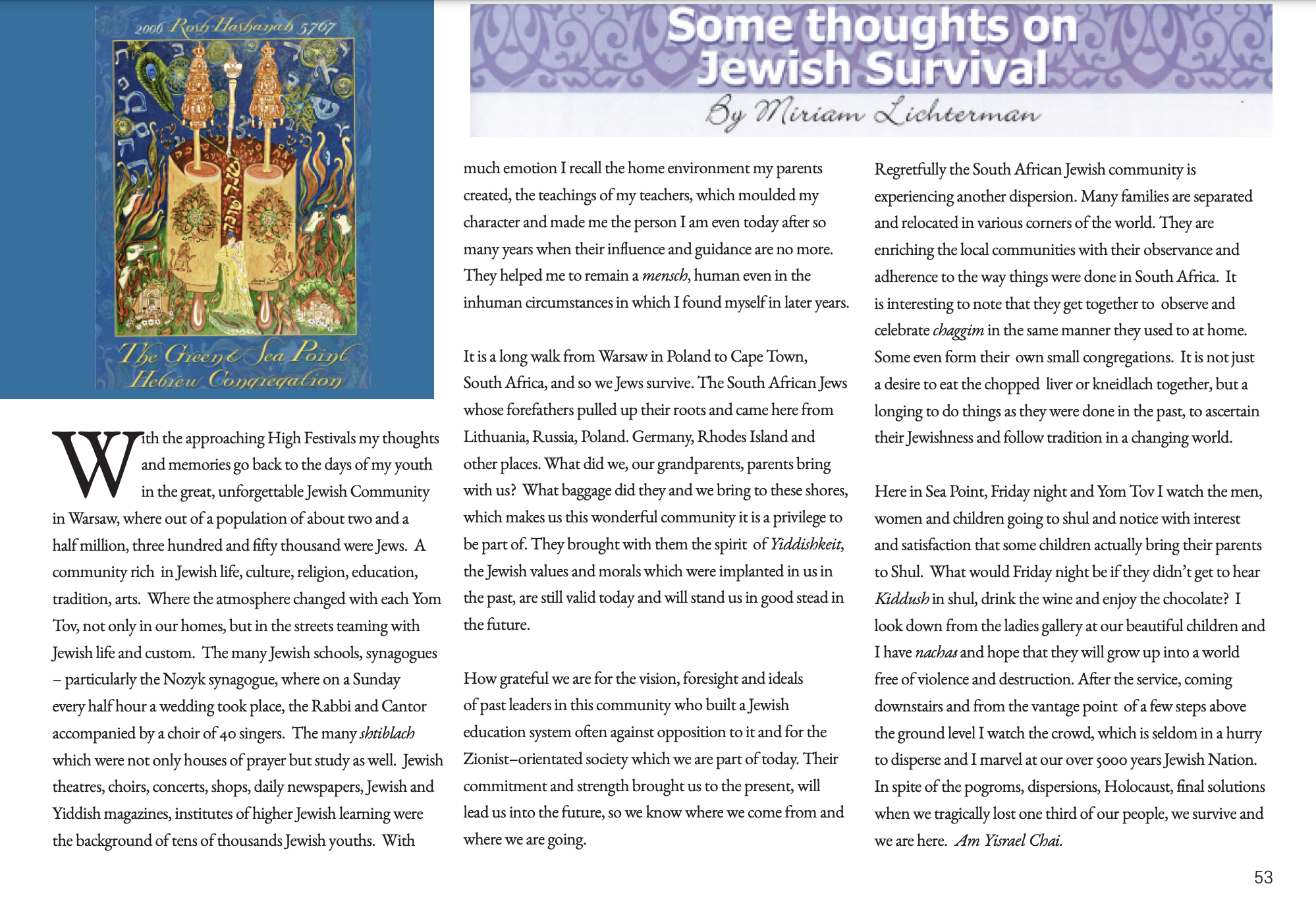
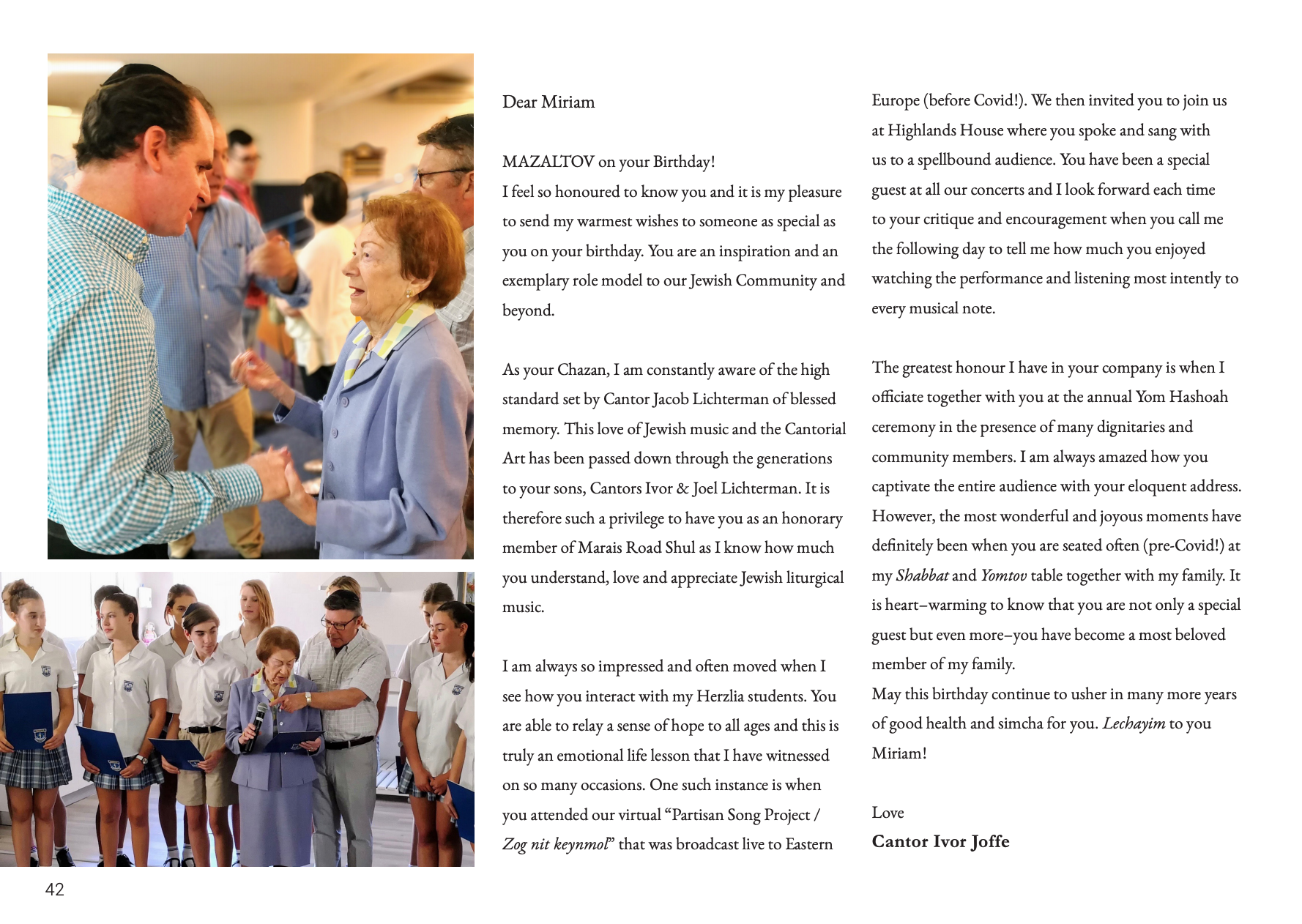
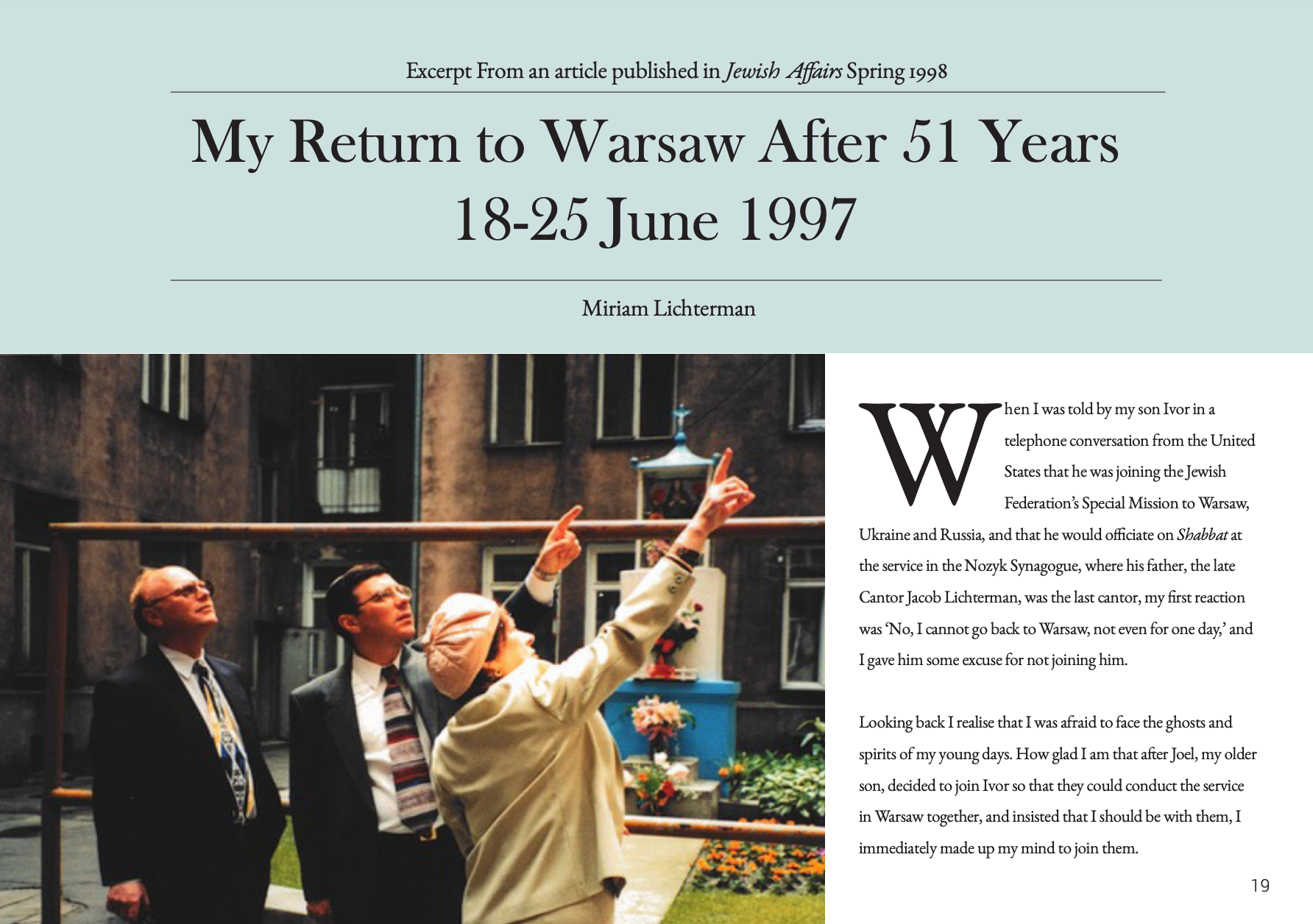
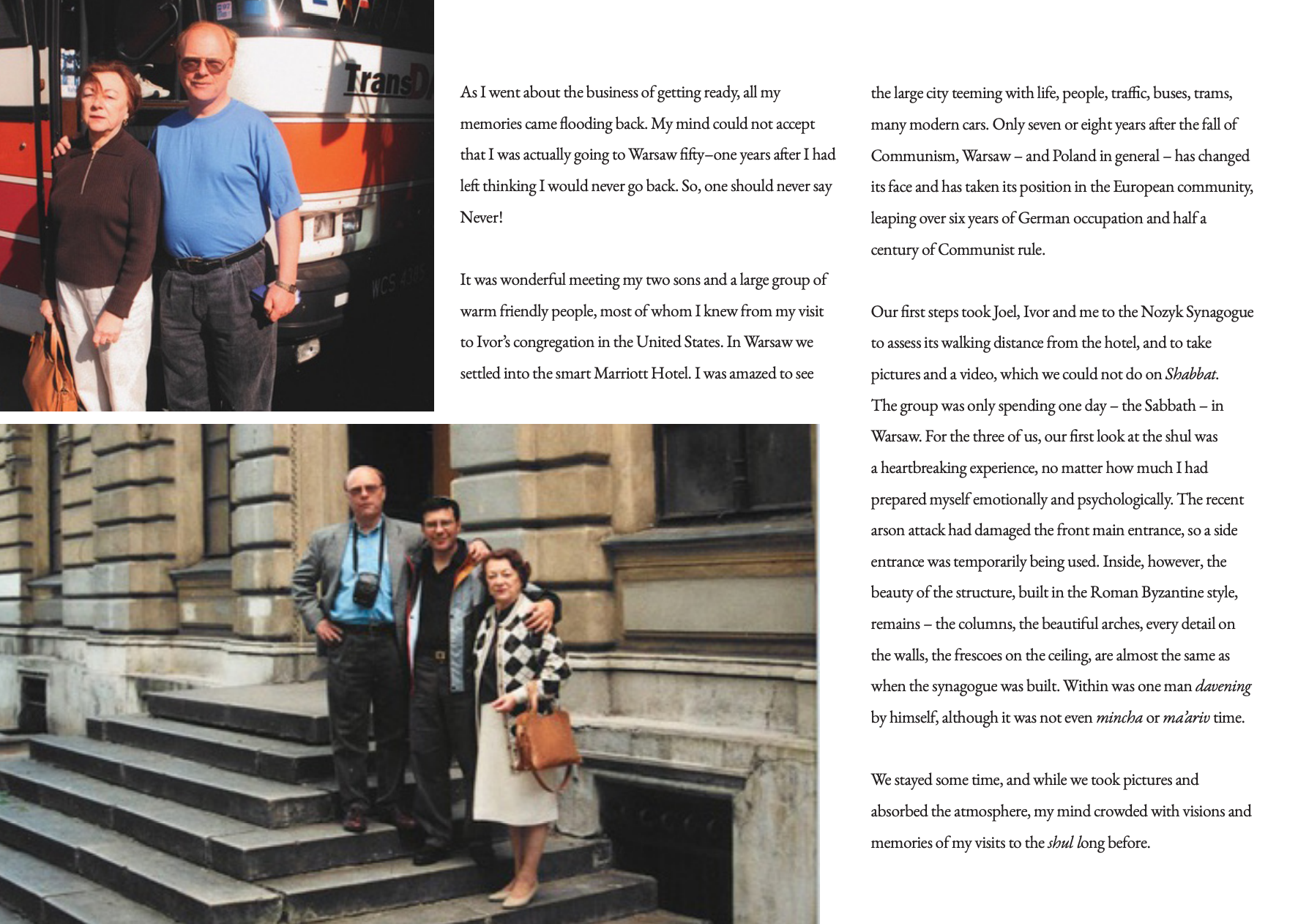
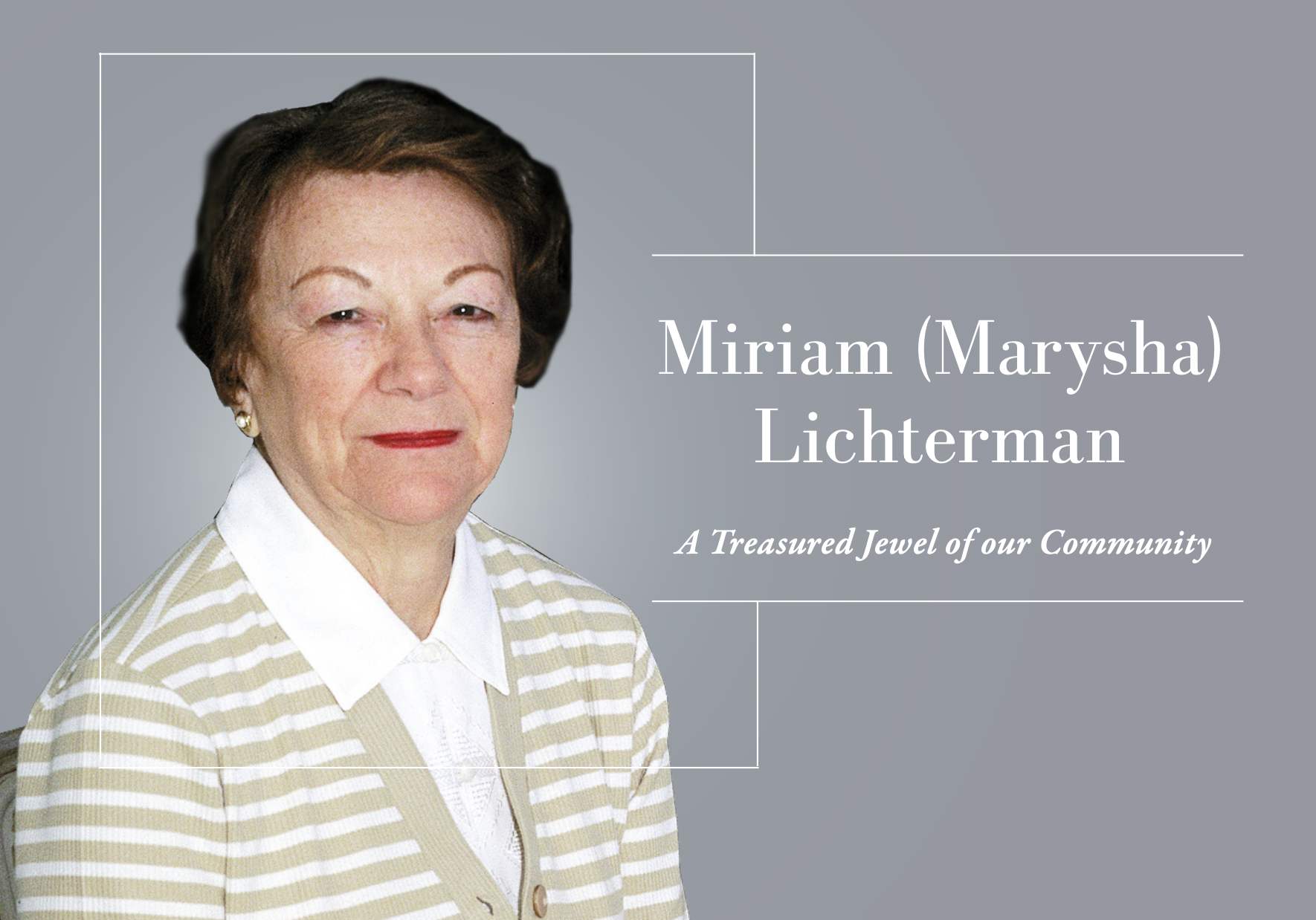
Link to the full document:
https://drive.google.com/file/d/189W63DXp6ahNxXCvrBP6bjiaztogwc7W/view?usp=sharing
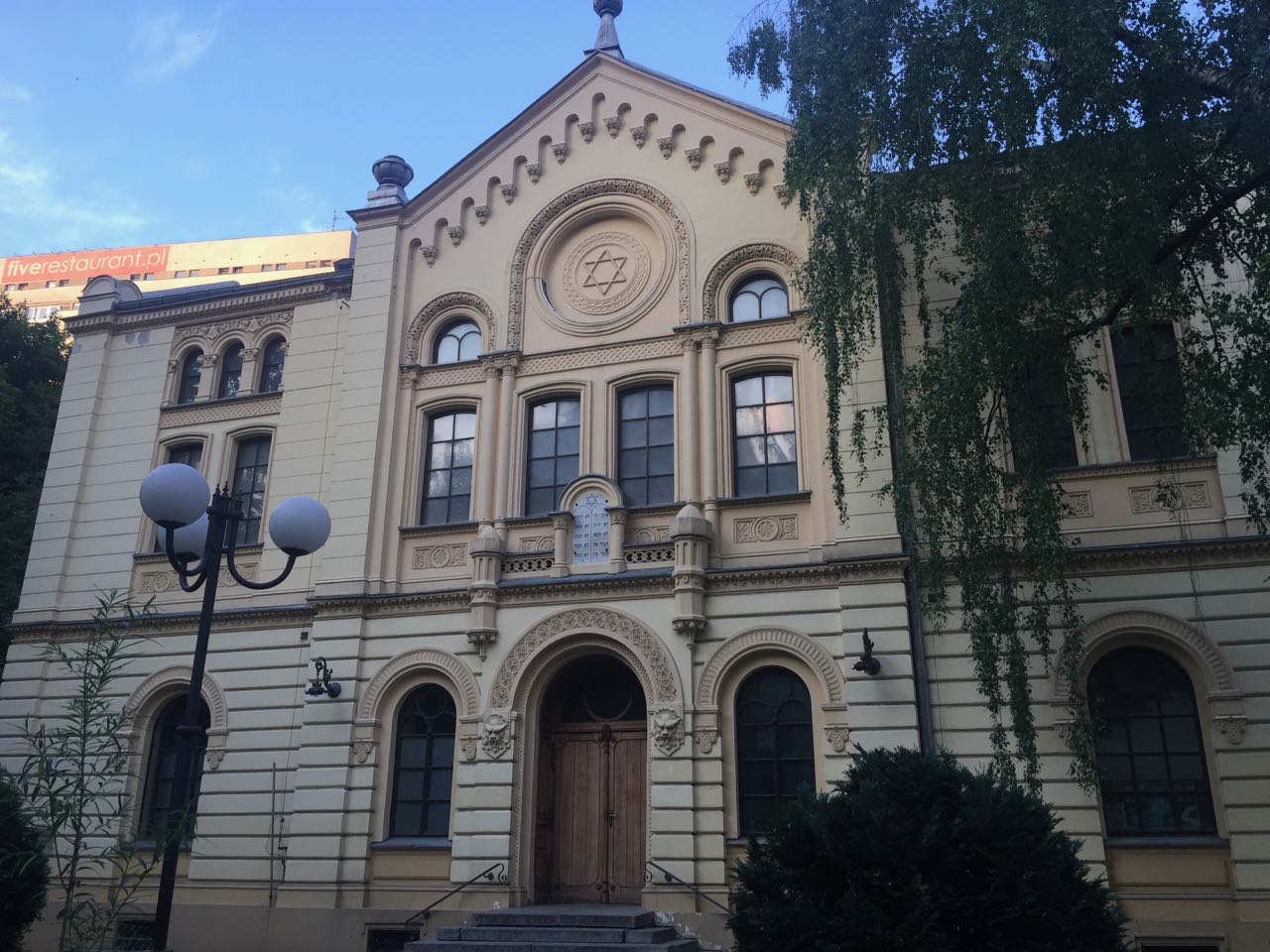
The last cantor at the Nozyk before the Holocaust
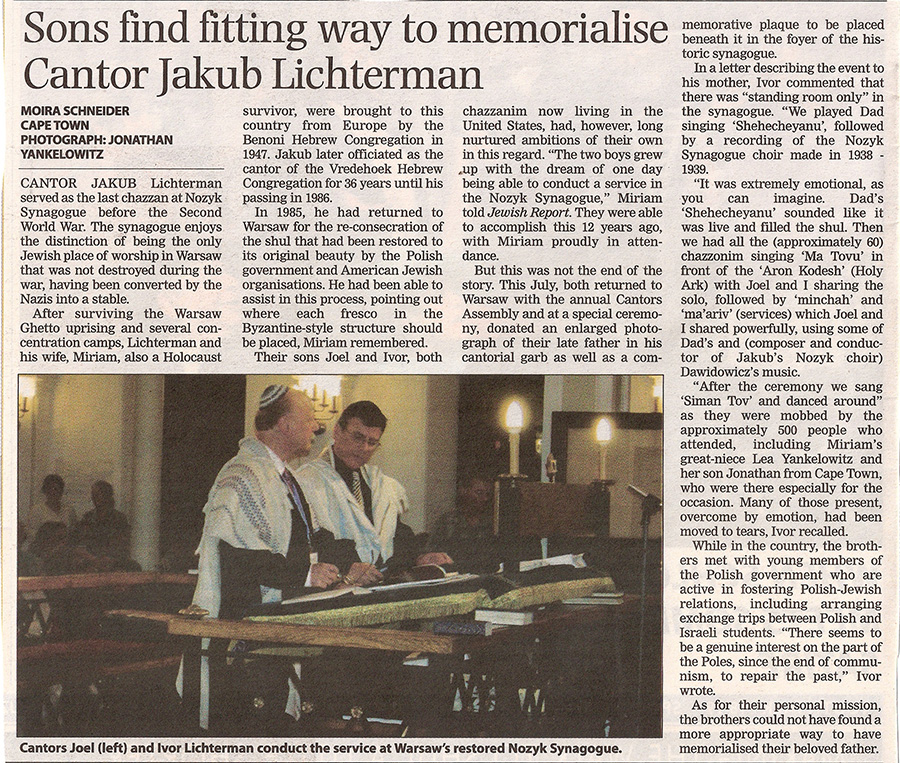
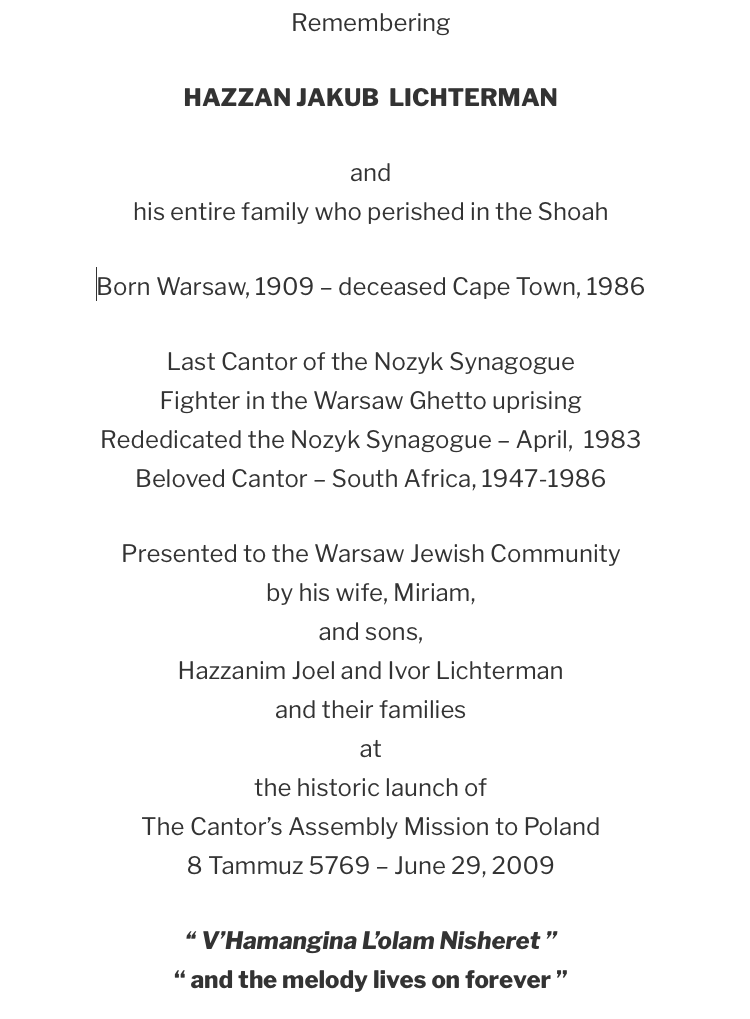
The visit of the Yosef Shlomo Kahaneman, the Ponevezh’s Rav to Cape Town in 1953. My zaida – Rev Nachum Mendel Rabinowitz – seated third from the left. Cantor Jakub Lichterman 2nd from the bottom right.
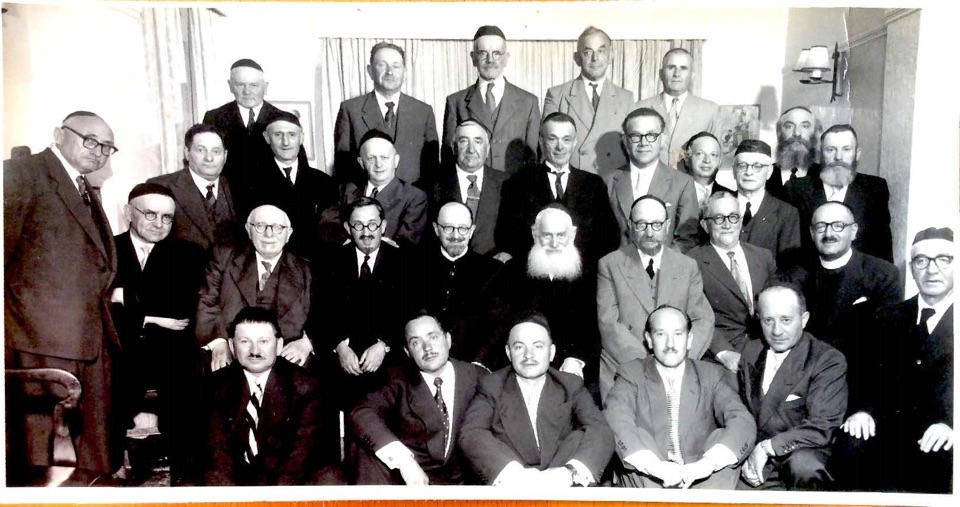
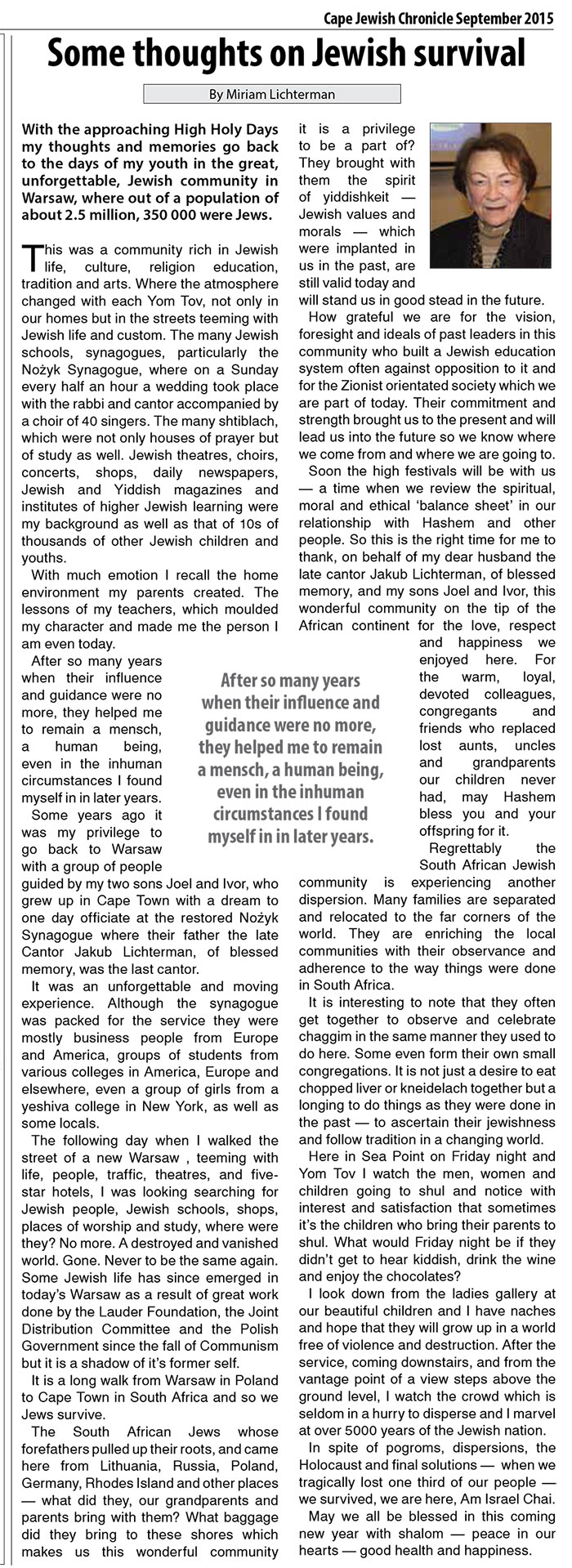
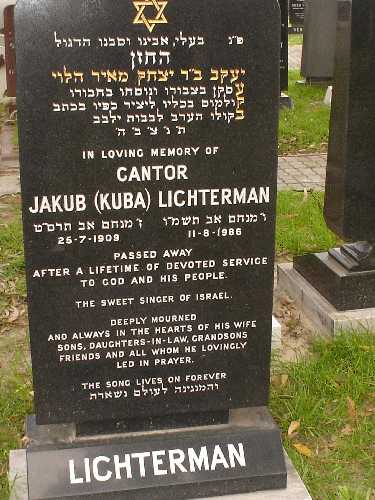
Video

8 August 1993 Cape Town South Africa – edited speech
Source: youtu.be/RGsYvLVsSpc
Full video here (1 hour 19 mins)

The Cape Town Holocaust Centre
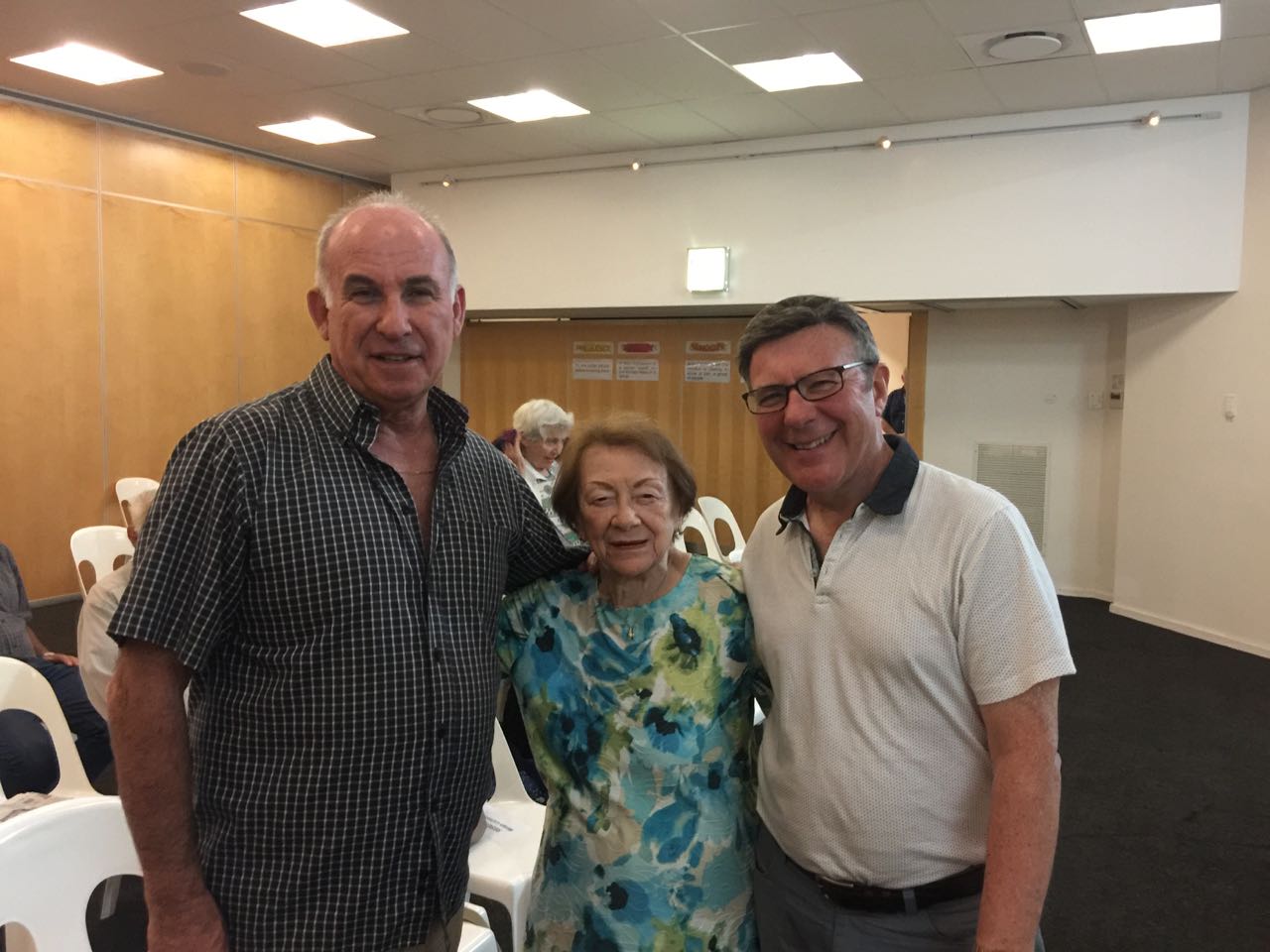
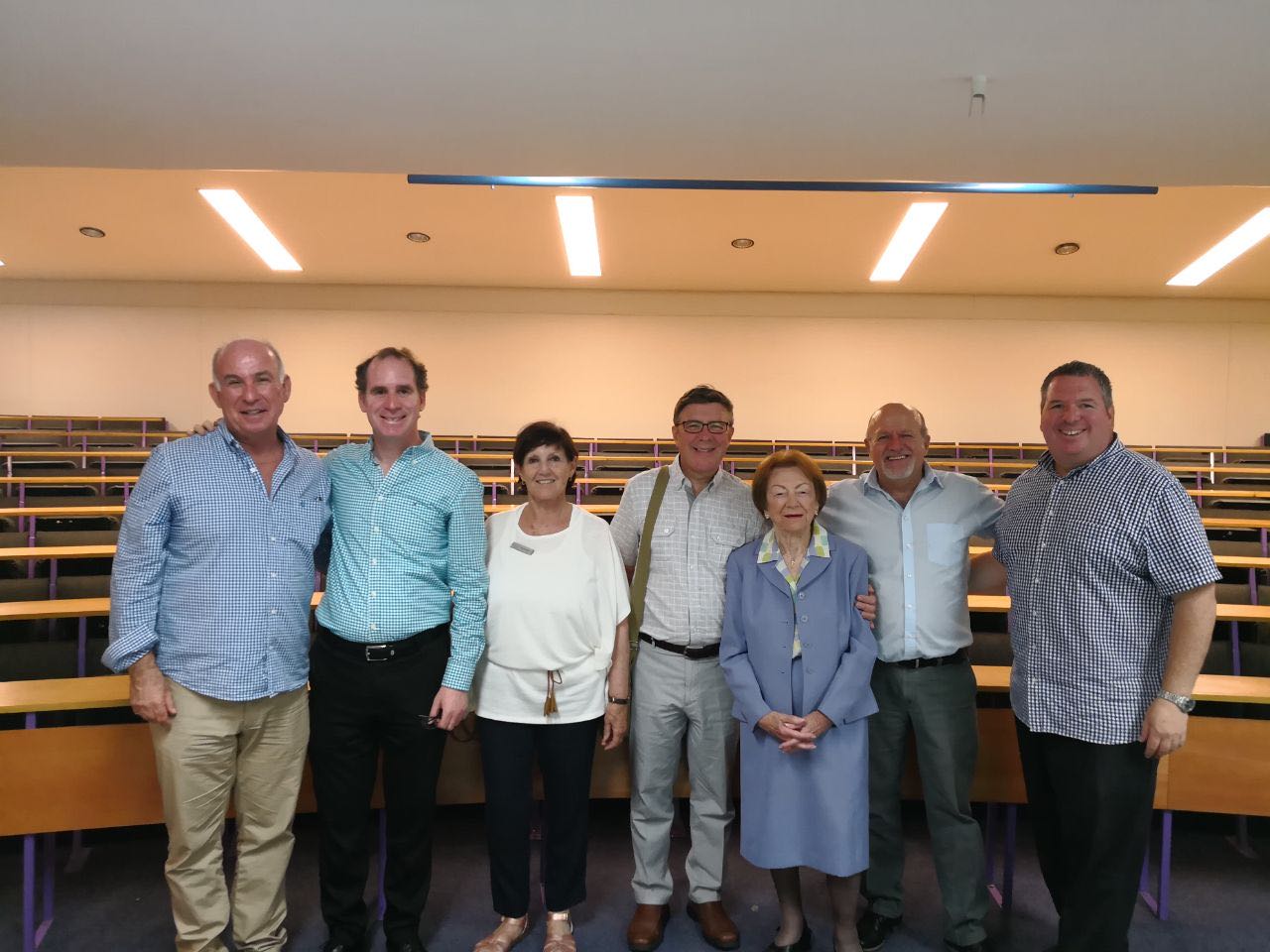
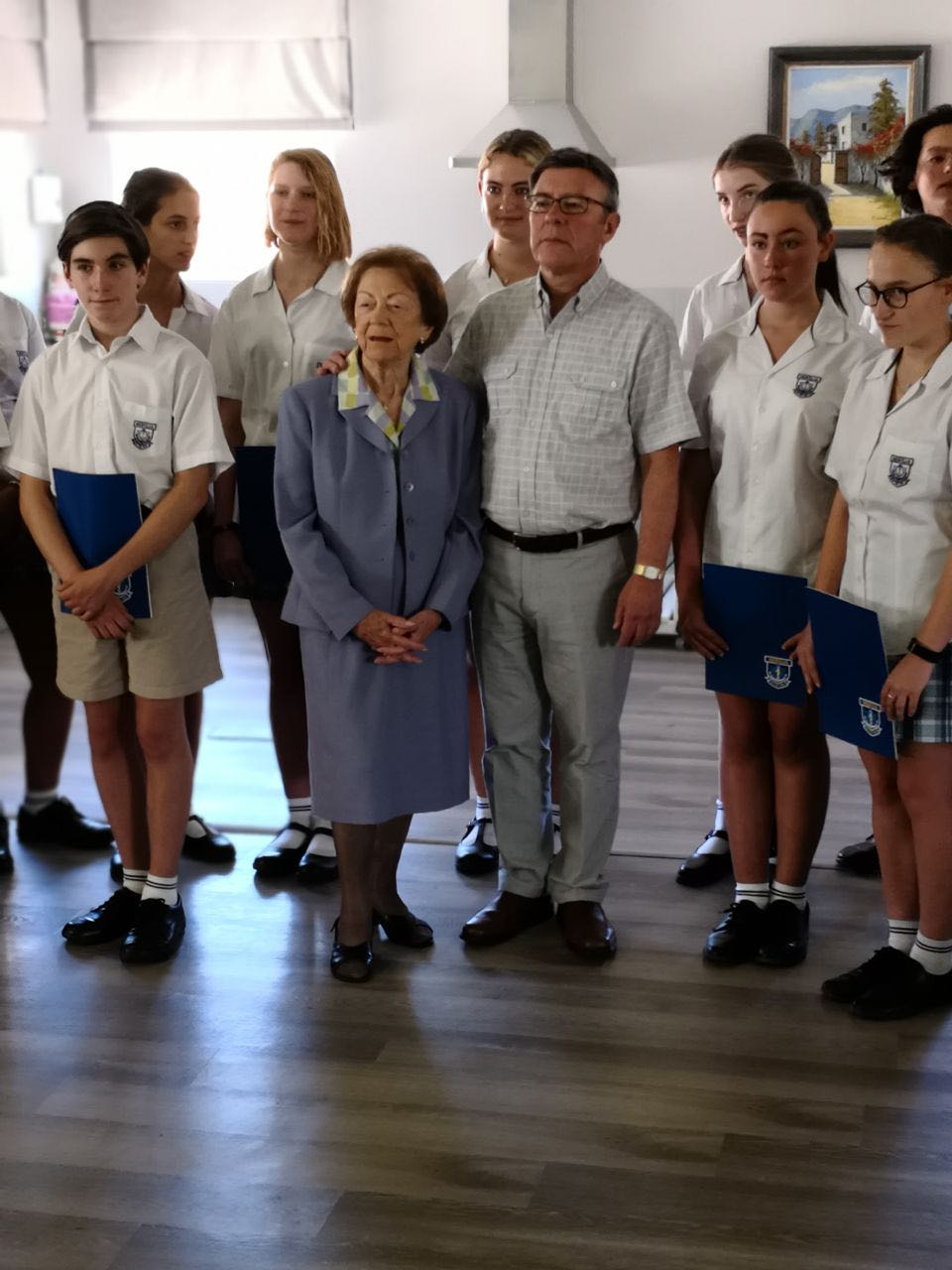
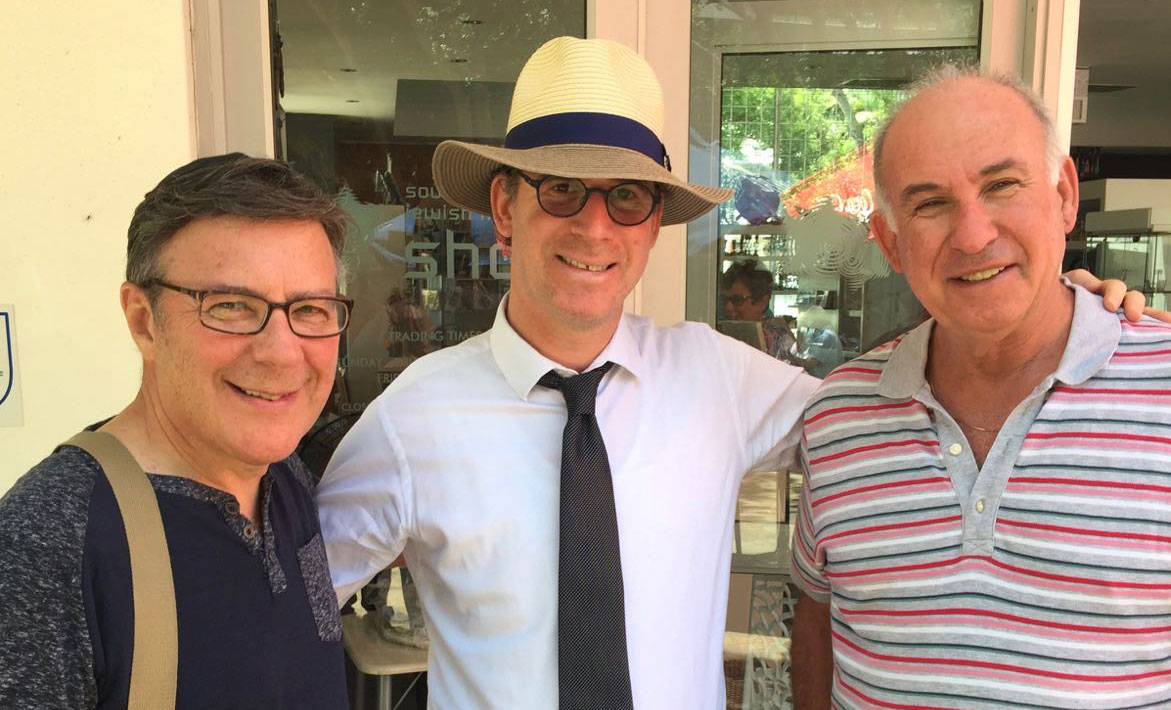
Video

Every year on Yom Hashoah the Day of Remembrance of the Holocaust and Heroism, Holocaust survivors and Jewish communities sing the song Zog Nit Keynmol
Source: youtu.be/tnaCtuqVBgg